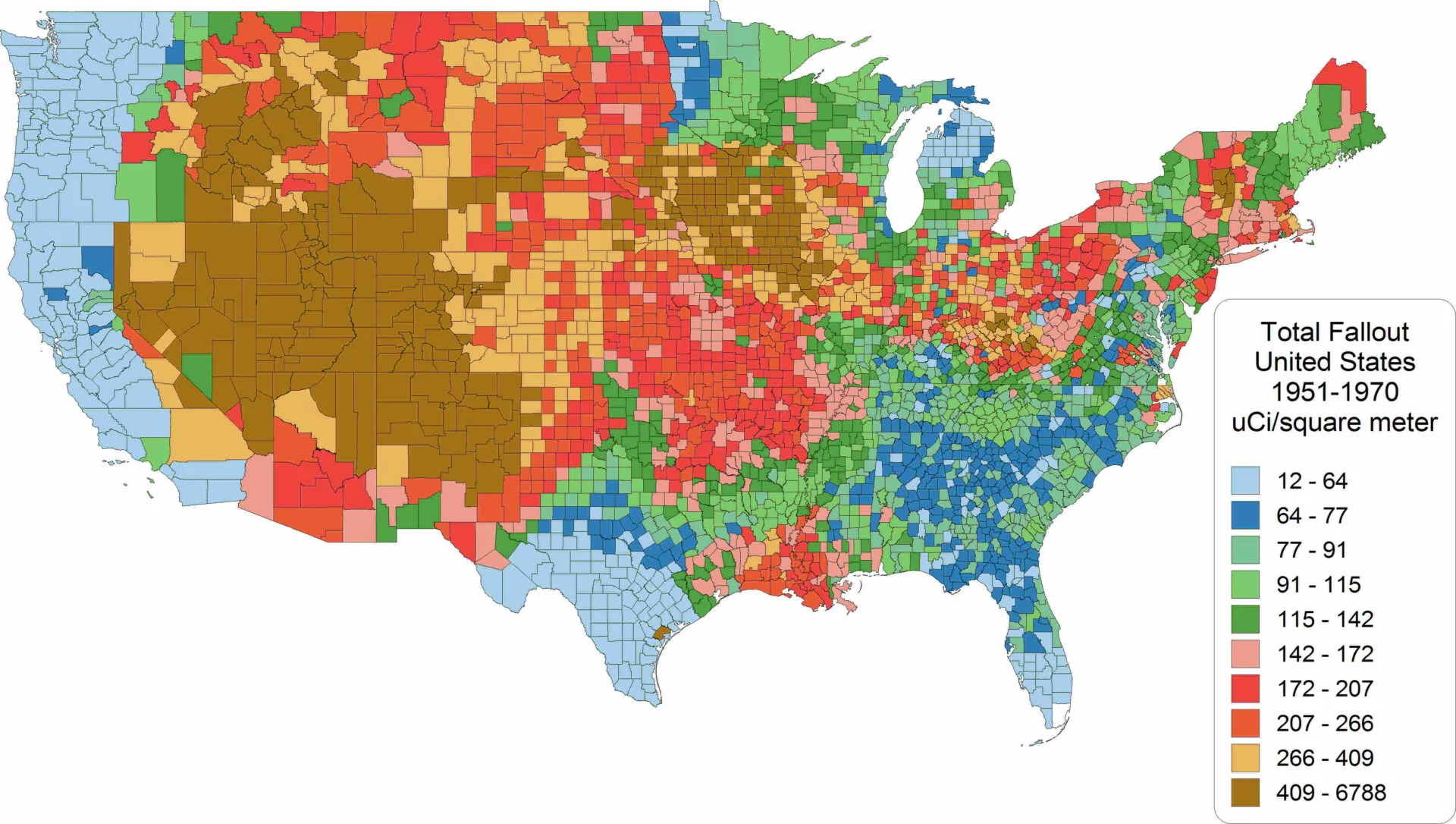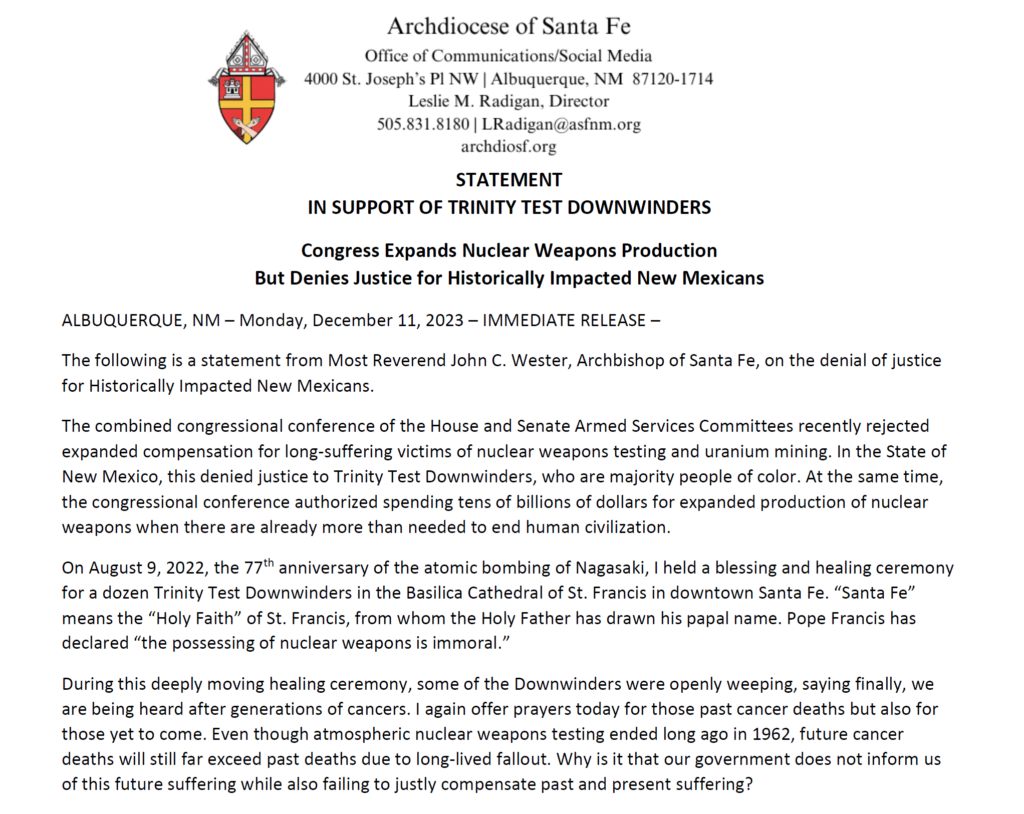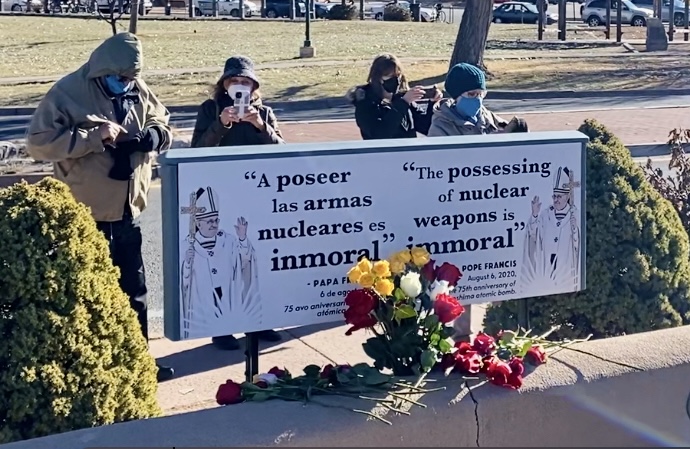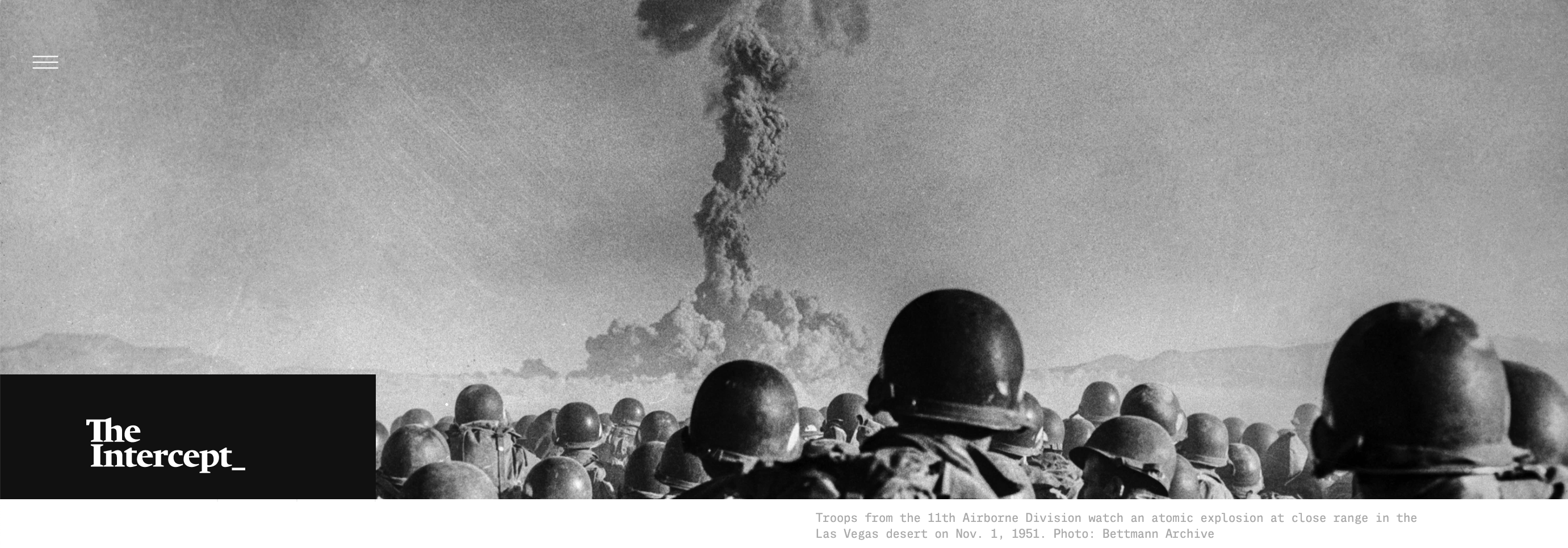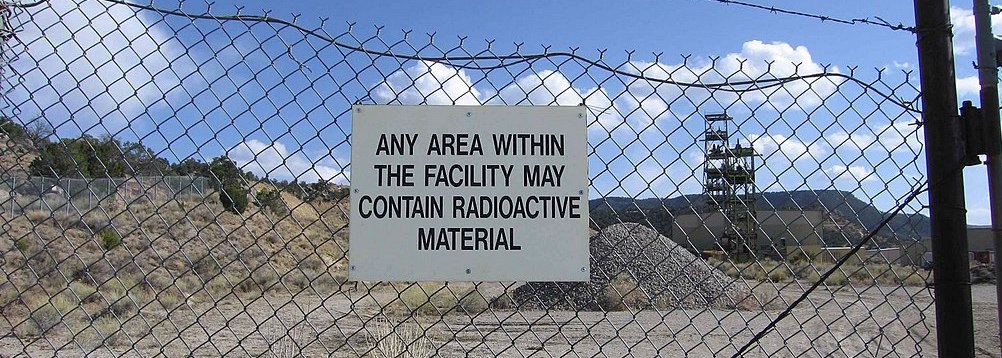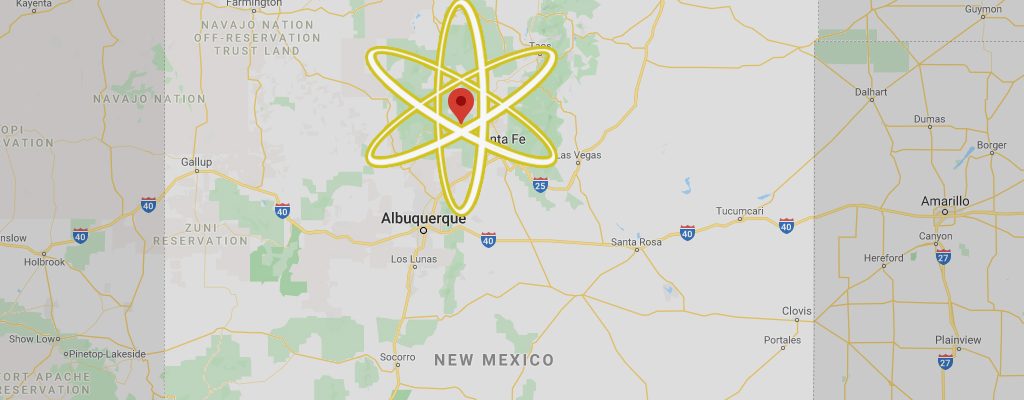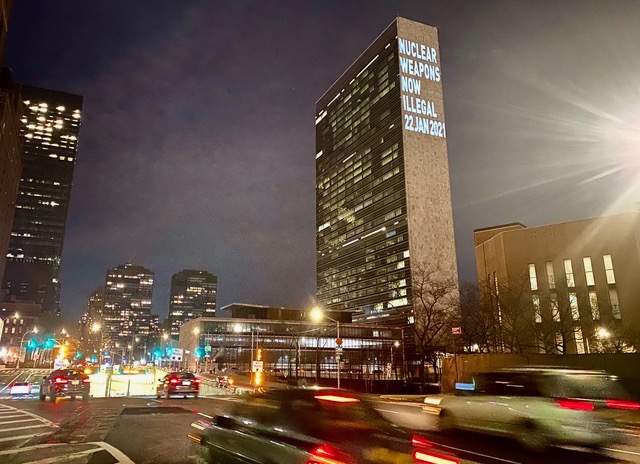2023 News Articles – All Posts
State Sues Holtec for Mishandling Asbestos at Pilgrim Reactor Site
Attorney general says demolition put workers and residents at risk
BY CHRISTINE LEGERE, THE PROVINCETOWN INDEPENDENT | February 15, 2024 provincetownindependent.org
BOSTON — Mass. Attorney General Andrea Campbell has filed a civil complaint against Holtec Decommissioning International, owner of the shuttered Pilgrim Nuclear Power Station in Plymouth, for a long list of violations related to improperly handling, storing, shipping, and disposal of asbestos-laced debris during the plant’s demolition.
The complaint cites work done between January 2021 and September 2023. The improper handling put the health of workers and residents near the plant in jeopardy, according to the complaint, which seeks penalties of $25,000 per day for each violation.
The attorney general’s office filed the 28-page suit on Feb. 14 in Suffolk Superior Court. Assistant Attorney General John Craig, from the office’s environmental division, states that Holtec didn’t hire the required asbestos inspector before demolishing a 32-foot-high water tower in 2021. Asbestos-laced paint on the exterior of the tower was not removed and properly disposed of, the complaint charges, and it wound up in flakes on the work site and mixed in with metal scraps from the tower.
Public given more time to comment on LANL’s steps against toxic plume
“Scott Kovac, Nuclear Watch New Mexico’s operations director, said the proposed actions seem broad, lacking important details on what actually would be done. Also, it would make more sense to have the Environment Department sign off on a plan of action — because the agency has final say — before going through the NEPA process.”They’re doing it backward,” Kovac said.”
By Scott Wyland swyland@sfnewmexican.com, Santa Fe New Mexican | February 12, 2024 santafenewmexican.com
The public will have an additional month to weigh in on a federal report assessing the possible impacts of the latest proposed measures for cleaning up a toxic chromium plume beneath Los Alamos National Laboratory.
The U.S. Energy Department issued the 115-page environmental assessment in November, then offered a 60-day period for public comment that was set to end Monday but now will go to March 13.
Building a World Without Nuclear Weapons
Building a World Without Nuclear Weapons: Online Forum January 27, 2024
Online forum held January 27, 2024 with musicians What the World Needs Now Interfaith Coalition Singers, host Peter Metz, Bishop John Stowe (Lexington KY), moderator Claire Schaeffer Duffy, and panelists Archbishop John Wester (Santa Fe NM), Dr. Ira Helfand, and Marie Dennis. With a special message from Rep. Jim McGovern (MA).
The fallout never ended
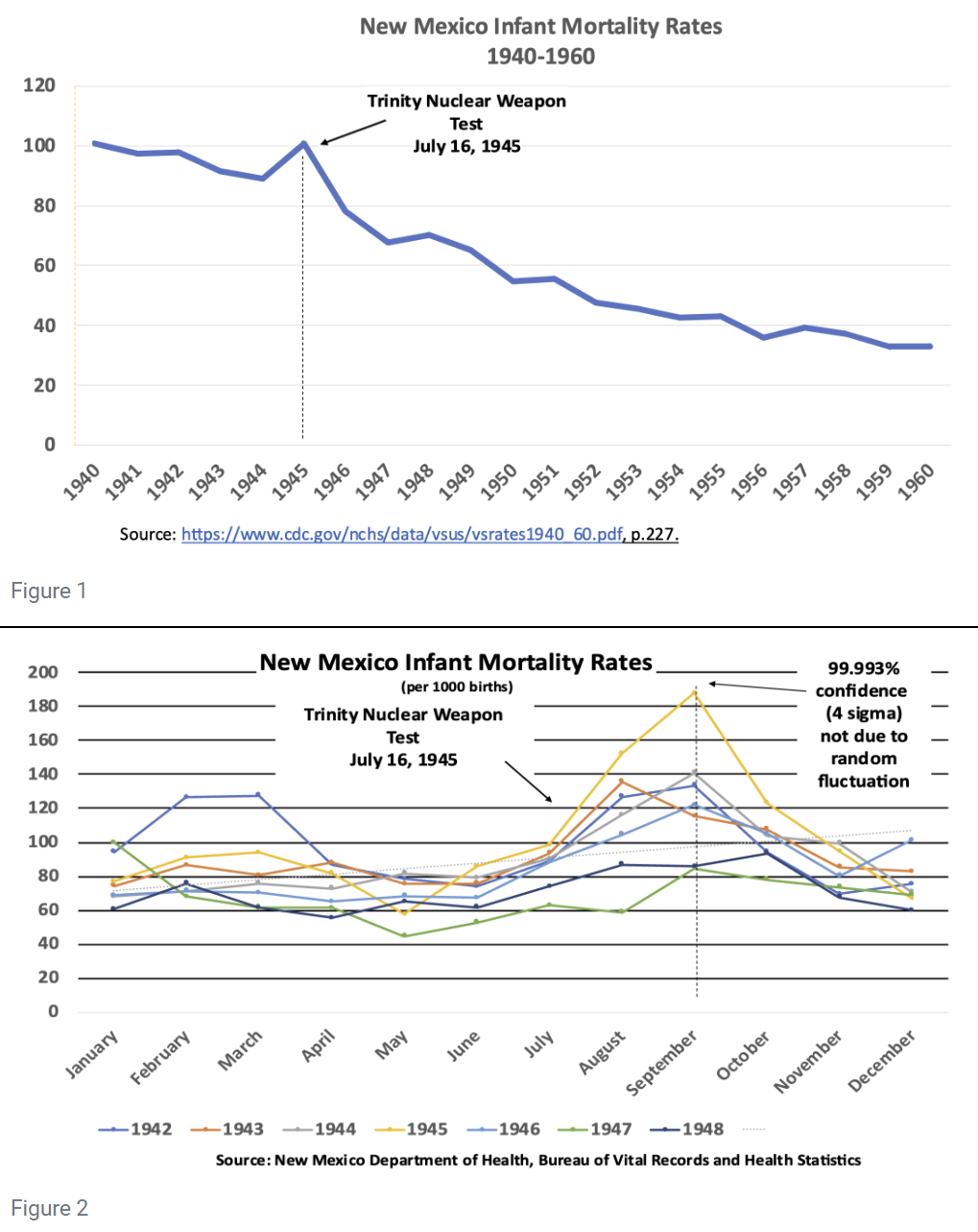 Decades of nuclear weapons tests and other radioactive experiments injured or killed scientists, soldiers, and innocent bystanders. Many of them, and their relatives, have never been compensated, but new efforts may change that. A former Senate staffer and expert on the US nuclear program looks back at its harmful effects, and how the government addressed them—or didn’t.
Decades of nuclear weapons tests and other radioactive experiments injured or killed scientists, soldiers, and innocent bystanders. Many of them, and their relatives, have never been compensated, but new efforts may change that. A former Senate staffer and expert on the US nuclear program looks back at its harmful effects, and how the government addressed them—or didn’t.
By Robert Alvarez , THE BULLETIN | February 1, 2024 thebulletin.org
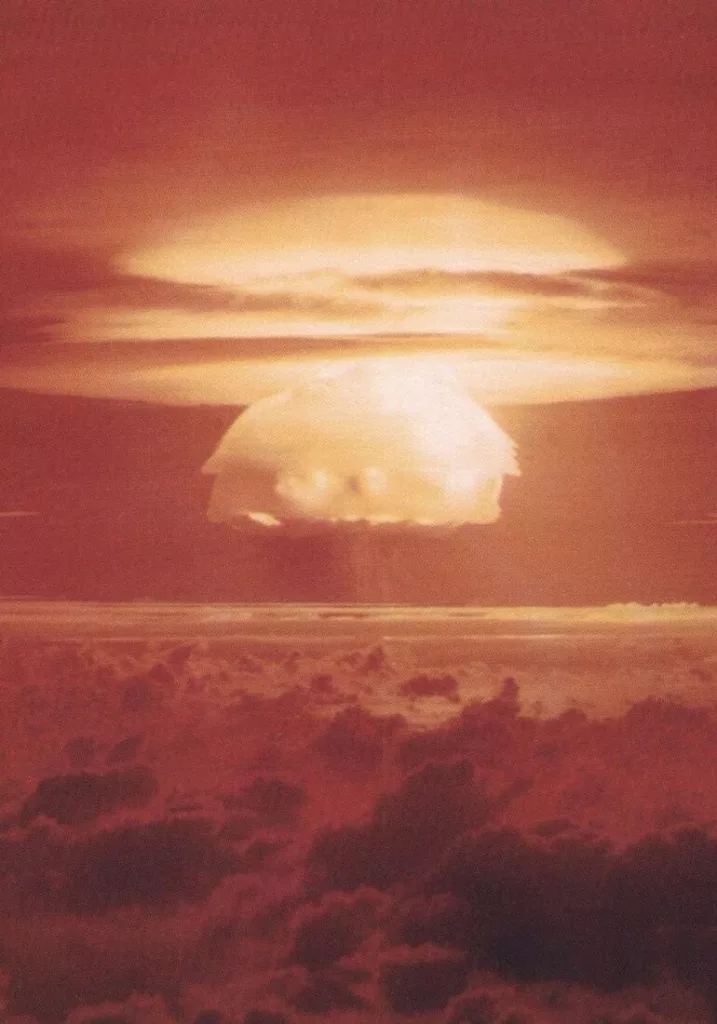
- ☢ Seeking justice for radiation victims of the US nuclear program
- ☢ Human radiation experiments and Oppenheimer’s “vaudeville”
- ☢ The radiation effects of Trinity
- ☢ Lewis Strauss, Castle Bravo, and the end of above-ground nuclear testing
- ☢ Running shoes on the Senate floor: How US preparations to test nuclear weapons ended
THE FALLOUT NEVER ENDED:
Attorney general seeks to deny Holtec $260M state tax break
In appeal to state Supreme Court, AG lists major concerns about Camden nuclear tech firm
BY JEFF PILLETS, NJ SPOTLIGHT NEWS | February 2, 2024 njspotlightnews.org
New Jersey Attorney General Matthew J. Platkin is appealing to the state Supreme Court to ban Holtec International, a Camden nuclear technology firm dogged by a history of ethical issues, from collecting a $260 million tax break awarded in 2014.
Platkin, in a petition to the court filed Thursday, wrote that Holtec must not be allowed to get away with lying on its application for the largest tax break in state history. Rewarding Holtec’s “material” misrepresentations, Platkin argued, would undermine state contract law and encourage other applicants to deceive the state.
“The question is whether a business that concealed prior misconduct when seeking millions in incentives can nevertheless walk away scot-free,’’ wrote Platkin, who is contending that the appellate court which decided in favor of Holtec made critical legal errors.
New York Times: Tax Break Scandal Leads to $5 Million Fine for N.J. Energy Company
A business tied to George Norcross III, a high-profile New Jersey Democrat, has agreed to pay a $5 million penalty after a criminal investigation into hundreds of millions of dollars in tax breaks that the energy company, Holtec International, was awarded.
By Tracey Tully, The New York Times | January 30, 2024 nytimes.com
The fine, announced early Tuesday by the state attorney general’s office, enables officials from Holtec, a company based in Camden, N.J., that dismantles nuclear power sites, to avoid criminal prosecution linked to a 2018 application for $1 million in tax credits.
Mr. Norcross, an insurance executive who sits on the board of Holtec, has for decades held an outsize grip on New Jersey politics and has used his clout in the national Democratic Party and in Camden County, as well as his fund-raising ability, to influence state legislation. Mr. Norcross has never held elected office, and his power has waned over the last several years after a series of embarrassing legislative losses in South Jersey.
Still, he has remained one of the state’s most feared unelected politicians.
“We are sending a clear message: No matter how big and powerful you are, if you lie to the state for financial gain, we will hold you accountable — period,” Matthew J. Platkin, New Jersey’s attorney general, said in a statement.
Holtec, in a statement, denied “any misconduct.”
Controversial Camden-based nuclear parts maker to pay $5M fine
New Mexico Archbishop Wester calls Catholics to work for nuclear abolition
“So, too, must we be prophets warning of the nuclear dangers,” Wester told participants. “So, too, must we be humble and faithful to God while bringing down the Goliath of nuclear weapons. We know that it’s not God’s purpose to end humanity in radioactive ashes. Instead, he wants to elevate the human race to light and salvation. But God’s purpose is worked through his instruments. So, let us get to work.” – Archbishop John Wester of Santa Fe, New Mexico
BY DENNIS SADOWSKI, The National Catholic Reporter | ncronline.org
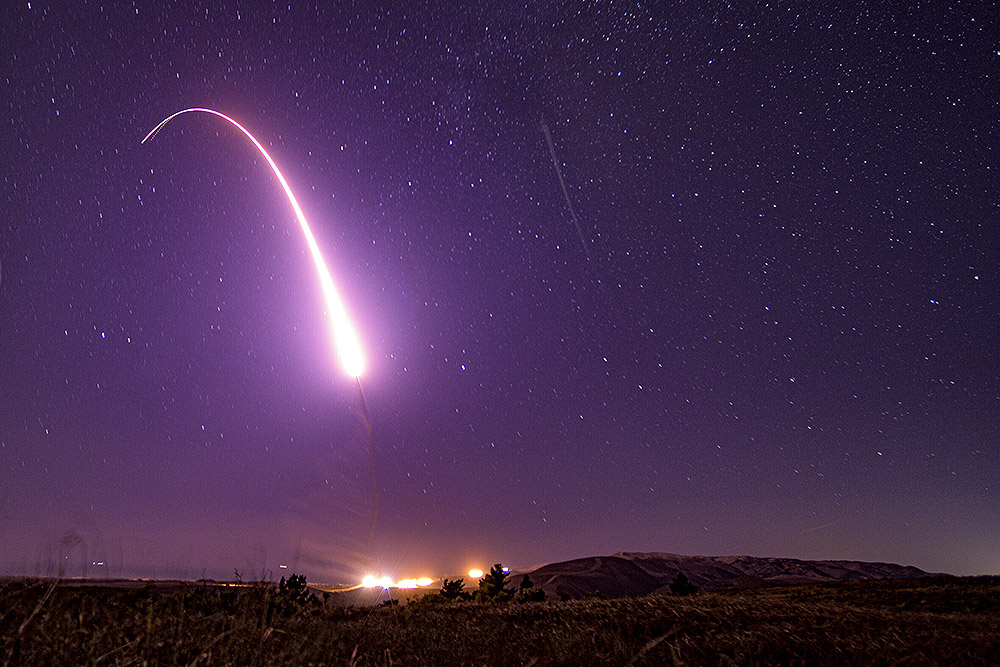
In the estimation of longtime peace advocate Marie Dennis, a gradual shift is taking place in communities, churches and schools around the world to embrace nonviolence in solving conflict.
From religious leaders in the Democratic Republic of Congo to neighborhoods in her hometown of Washington, D.C., people are coming together to seek new and creative paths to build peaceful communities, she said.
They may be small steps, but the glimmers in everyday life give her hope that conflict and even wars, including nuclear war, eventually can be overcome, Dennis told National Catholic Reporter following a Jan. 27 webinar hosted by Pax Christi USA and the Pax Christi Massachusetts chapter.
The webinar marked the third anniversary of the Treaty on the Prohibition of Nuclear Weapons coming into force on Jan. 22, 2021.
The 2024 Doomsday Clock announcement from the Bulletin of Atomic Scientists
A moment of historic danger: It is still 90 seconds to midnight
Ominous trends continue to point the world toward global catastrophe. The war in Ukraine and the widespread and growing reliance on nuclear weapons increase the risk of nuclear escalation. China, Russia, and the United States are all spending huge sums to expand or modernize their nuclear arsenals, adding to the ever-present danger of nuclear war through mistake or miscalculation.
In 2023, Earth experienced its hottest year on record, and massive floods, wildfires, and other climate-related disasters affected millions of people around the world. Meanwhile, rapid and worrisome developments in the life sciences and other disruptive technologies accelerated, while governments made only feeble efforts to control them.
The members of the Science and Security Board have been deeply worried about the deteriorating state of the world. That is why we set the Doomsday Clock at two minutes to midnight in 2019 and at 100 seconds to midnight in 2022. Last year, we expressed our heightened concern by moving the Clock to 90 seconds to midnight—the closest to global catastrophe it has ever been—in large part because of Russian threats to use nuclear weapons in the war in Ukraine.
Today, we once again set the Doomsday Clock at 90 seconds to midnight because humanity continues to face an unprecedented level of danger. Our decision should not be taken as a sign that the international security situation has eased. Instead, leaders and citizens around the world should take this statement as a stark warning and respond urgently, as if today were the most dangerous moment in modern history. Because it may well be.
But the world can be made safer. The Clock can move away from midnight. As we wrote last year, “In this time of unprecedented global danger, concerted action is required, and every second counts.” That is just as true today.
Continue reading the full 2024 Doomsday Clock statement.
Watch the 2024 Doomsday Clock announcement above.
Nuclear deterrence is the existential threat, not the nuclear ban treaty
In the words of Melissa Parke, the executive director of the International Campaign to Abolish Nuclear Weapons (ICAN), “Nuclear deterrence may well work until the day it doesn’t.” What happens when nuclear deterrence fails? The problem is that it is impossible to create a plan for that day.
By Ivana Nikolić Hughes, Xanthe Hall, Ira Helfand, Mays Smithwick, THE BULLETIN | January 22, 2024 thebulletin.org

In a deeply misguided article in this publication, Zachary Kallenborn contends that the Treaty on the Prohibition of Nuclear Weapons (TPNW) is a threat to humanity. To build this narrative, Kallenborn does not simply present nuclear deterrence as a stable and useful framework for avoiding conventional wars. Rather, he goes beyond the common deterrence arguments to assert that nuclear weapons restrain world wars, which allows nations to work together on addressing existential threats. Nothing could be further from the truth.
Nuclear deterrence is a myth. Nuclear deterrence involves a nation state maintaining a believable threat of retaliation to deter an adversary’s attack. This relies on demonstrations of the readiness and the capacity to use nuclear weapons—a highly dangerous form of bluff which, in turn, makes those targeted increase their hardware and rhetoric. We are currently witnessing this kind of escalation among several nuclear weapon possessor states, which could result in nuclear war.
Nuclear deterrence rests on decision makers always behaving rationally; even if different states and parties weigh values, threats, and possible consequences in the same way, individual leaders do not always behave rationally.
The Nuclear Ban Treaty Is Taking a Step Forward
Given the treaty is steadily becoming a part of international nuclear nonproliferation and disarmament architecture, it is imperative for the United States, nuclear-armed states and states under the U.S. nuclear extended deterrence “umbrella” to consider how they can also productively engage with the treaty and its states parties,
ARMS CONTROL ASSOCIATION | January 17, 2024 armscontrol.org
On the afternoon of the first day of December 2023, the UN conference room in New York was filled with long and powerful applause, when the state parties to the Treaty on the Prohibition of Nuclear Weapons (TPNW), known informally as the “nuclear ban treaty,” concluded the second meeting on implementation since it entered into force in January 2021.
It has been just five years since the treaty was concluded in 2017, but the TPNW is already helping to bolster the international nuclear nonproliferation and disarmament architecture by reinforcing the norms against nuclear weapons use and providing a path for non-nuclear weapon states and communities and populations adversely affected by nuclear weapons to engage in efforts to advance disarmament and address the damage done by past nuclear weapons testing and use.
Since the TPNW opened for signature, the number of states parties has grown to 70. Significantly, the number of non-signatory observer states that have joined the TPNW meetings to learn more about the treaty has also grown. Their participation underscores that states inside and outside the TPNW can advance progress toward their shared goals: preventing nuclear war and moving closer to the peace and security of a world without nuclear weapons.
Victims of nuclear weapon development plan Hill barrage
Advocates seek expansion of Radiation Exposure Compensation Act
By Mike Magner, ROLL CALL | January 11, 2024 rollcall.com
A lobbying blitz is expected this month from advocates for the untold thousands of Americans harmed by radiation from government nuclear projects dating back to World War II, starting with development and testing of the first atomic bomb.
Senators pushing to expand aid for radiation victims were infuriated in December when a provision to reauthorize a compensation fund that expires in June was stripped from the 2024 National Defense Authorization Act prior to Senate passage, largely because of concerns about the projected price tag: $147 billion over 10 years.
Now groups ranging from a coalition of mothers in the St. Louis area to the Navajo Nation are planning visits to Capitol Hill to demand expansion and a longer renewal of the Radiation Exposure Compensation Act, a 1990 law that provided aid to uranium workers and those exposed to any of nearly 200 nuclear tests in Nevada between 1945 and 1962. The law did not cover those exposed to the first nuclear detonation in White Sands, N.M., in 1945.
Colorado Environmental Groups File Federal Lawsuit to Halt Rocky Flats Trail
Lawsuit claims federal agencies did not consider alternatives to “plutonium-contaminated” portion of refuge
By Katie Langford, DENVER POST | January 8, 2024 denverpost.com

Physicians for Social Responsibility and five Colorado advocacy groups are suing Transportation Secretary Pete Buttigieg, Interior Secretary Deb Haaland and four federal agencies to halt work on a trail through Rocky Flats National Wildlife Refuge.
The lawsuit, filed in federal court in the District of Columbia on Monday, claims that the U.S. departments of Transportation and the Interior, the U.S. Fish and Wildlife Service and the Federal Highway Administration violated the National Environmental Policy Act by not considering alternatives to constructing an 8-mile greenway “through the most heavily plutonium-contaminated portion” of the refuge.
Environmental Assessment (EA) For Chromium Plume At LANL Now Out For Review
Carol A. Clark, Los Alamos Daily Post | December 19, 2023 ladailypost.com
Summary
Groundwater sampling data from monitoring wells at Los Alamos National Laboratory (LANL) indicate the presence of chromium contamination in the regional aquifer resulting from historical use of potassium dichromate, a corrosion inhibitor, in cooling tower water that was discharged to an outfall as part of operational maintenance activities.
DOE is preparing an Environmental Assessment (EA) to evaluate alternatives for remedial action as part of the Chromium Interim Measures and Characterization Campaign identified in Appendix A of 2016 Compliance Order on Consent between DOE and the New Mexico Environmental Department.
Public Comment Opportunities
DOE is accepting public comments on the draft EA through Feb. 12, 2024. Please submit public comments using one of the following methods:
Email:
EMLA-NEPA@em.doe.gov. Please use the subject line: Chromium Draft EA Comment
U.S. Mail:
- EM-LA NEPA Document Manager, U.S. DOE Environmental Management Los Alamos Field Office, 1200 Trinity Drive, Suite 400, Los Alamos, NM 87544
Draft EA:
- DOE has prepared a draft EA (DOE/EA-2216) to evaluate alternatives for remedial action as part of the Chromium Interim Measures and Characterization Campaign identified in Appendix A of 2016 Compliance Order on Consent between DOE and the New Mexico Environmental Department.
For further information:
North Korea’s Kim says military should ‘thoroughly annihilate’ US and South Korea if provoked
“In his New Year’s Day address Monday, South Korean President Yoon Suk Yeol said he will strengthen his military’s preemptive strike, missile defense and retaliatory capabilities in response to the North Korean nuclear threat.”
BY HYUNG-JIN KIM, AP NEWS | January 1, 2024 apnews.com
North Korea has increased its warlike rhetoric in recent months in response to an expansion of U.S.-South Korean military drills. Experts expect Kim will continue to escalate his rhetoric and weapons tests because he likely believes he can use heightened tensions to wrest U.S. concessions if former President Donald Trump wins the U.S. presidential election in November.
Glove box fire closed part of LANL plutonium facility in November
The federal agency and the lab also have resisted conducting public reviews of pit production, though mishaps and safety infractions are likely to grow more frequent, said Jay Coghlan, executive director of Nuclear Watch New Mexico.
“LANL knows that chronic nuclear safety incidences will increase with expanded plutonium pit production for the new nuclear arms race, which in turn would cause greater public resistance,” Coghlan said.
By Scott Wyland, THE SANTA FE NEW MEXICAN | December 21, 2023 santafenewmexican.com

A sealed compartment with safety gloves attached caught fire at Los Alamos National Laboratory in November, resulting in officials shutting down a portion of the site’s plutonium facility for 10 days, according to the lab’s and government watchdogs’ reports.
Employees were pulverizing 40-year-old legacy materials that were removed from the facility to create more storage and work space when they saw a flash and then a fire inside one of the glove boxes they were using for the task, according to a Defense Nuclear Facilities Safety Board report.
They deactivated the equipment, sounded alarms and promptly left the room. They and other facility workers evacuated the building.
Buried secrets, poisoned bodies
Why did a Truchas woman die with extraordinary amounts of plutonium in her body — and why was she illegally autopsied? For this reporter, the answers hit close to home.
By Alicia Inez Guzmán, SEARCHLIGHT NM | December 20, 2023 searchlightnm.com
The first reference to her comes, of all places, on an airplane. It’s the end of April and sitting next to me is Jay Coghlan, the executive director of Nuclear Watch New Mexico. Both of us are on our way back to Santa Fe from Washington, D.C., after the Alliance for Nuclear Accountability’s weeklong annual gathering. Coghlan, galvanized by the last several days of activities, spends most of the flight ticking down his list of Los Alamos National Laboratory’s most recent sins. But suddenly he turns to the past.
“Did you know that the person with the highest levels of plutonium in her body after the atomic detonation at Trinity Site was a woman from Truchas?” he asks me. The remark, more hearsay than fact, piques my interest. As Coghlan knows, that’s my pueblito, the place in northern New Mexico where I grew up on land passed down through many generations of women. Tina Cordova — co-founder of the Tularosa Basin Downwinders Consortium — would know more, he adds. “Ask her.”
Truchas, short for Nuestra Señora del Rosario, San Fernando y Santiago del Río de las Truchas, sits on a ridge in the Sangre de Cristo mountains, 8,000 feet above sea level. With some 370 people in town, most everybody keeps up with the latest mitote, or gossip, at the local post office. A regional variation of Spanish is still spoken by elders. Bloodlines go back centuries. And neighbors might also be relatives. If she is from this tiny, but remarkable, speck on the map, I must at least know of her. My mom, a deft weaver of family trees, definitely would.
Congress should reinstate radiation exposure compensation
“Even though atmospheric nuclear weapons testing ended long ago in 1962, future cancer deaths will still far exceed past deaths due to long-lived fallout. Why is it that our government does not inform us of this future suffering while also failing to justly compensate past and present suffering?” – Archbishop of Santa Fe John C. Wester in a statement supporting those damaged by the nation’s nuclear activities,
THE SANTA FE NEW MEXICAN | December 13, 2023 santafenewmexican.com
New Mexico is the birthplace of the atomic bomb and site of the first test in 1945. But people here were not included in the original legislation designed to compensate individuals harmed by the nation’s nuclear efforts. Last week, a new injustice: An amendment to the 2024 defense spending bill to allow federal compensation for New Mexicans hurt by mining or testing was struck from the National Defense Authorization Act during House-Senate Armed Service Committee negotiations last week.
Compensation for radiation exposure had been included as part of the defense spending bill in an amendment sponsored by U.S. Sen. Ben Ray Luján along with GOP Sens. Mike Crapo of Idaho and Josh Hawley of Missouri. Luján has sponsored radiation exposure compensation bills in every Congress since he first was elected to the House in 2008.
Archbishop Wester’s STATEMENT IN SUPPORT OF TRINITY TEST DOWNWINDERS
Congress Expands Nuclear Weapons Production
But Denies Justice for Historically Impacted New Mexicans
ARCHDIOCESE OF SANTA FE | December 11, 2023 archdiosf.org
New information tool on nuclear weapons seeks to identify the next arms control strategies
“The sum of this data shows a familiar, albeit distinctly important, pattern: As nuclear weapon technologies surged forward, the world entered uniquely dangerous periods in which crises erupted despite a plethora of different nuclear capabilities. Crisis after crisis, steps to control an unchecked arms race were found to be both stabilizing and mutually beneficial—only to be discarded or violated, tempting disaster.”
By Andrew Facini, Bulletin of the Atomic Scientists | December 4, 2023 thebulletin.org

The way countries view nuclear weapons is shifting. As past arms control measures have ended or decayed, the United States, Russia, and China are investing heavily (again) in their nuclear arsenals, pursuing new capabilities and discarding constraints once seen as fundamentally stabilizing.
For those of us seeking to cultivate nuclear policies geared toward enhancing strategic stability, the current trend reflects a worrying loss of perspective—a forgetting of the hard-earned lessons of the Cold War. To help put today’s trends in their historical context, at team of the Council on Strategic Risks (CSR) developed a new visualization tool and information system that maps every type of nuclear weapon fielded by the five nuclear weapons states (P5) under the Nuclear Non-Proliferation Treaty (NPT)—China, France, Russia, the United Kingdom, and the United States—from their inception to present day.
Launched last week, the Nuclear Weapons Systems Project seeks a “qualitative rethink” by providing a curated data source for all major nuclear delivery systems ever deployed. By seeing more easily what has changed and when, users can better identify the benefits of states’ long trajectory of narrowing the types of nuclear capabilities in the world, understand the risks of a new expansion of nuclear capabilities, and develop ways to de-risk the current situation and prevent future security crises.
Second meeting of states parties agrees nuclear deterrence is the problem
“A joint statement endorsed by 26 nuclear affected community-led organisations, and supported by a further 45 allied organisations said ‘We have the right and responsibility to speak about what nuclear weapons really do… We call on States Parties to the TPNW to push relentlessly for its universalisation.’”
ICAN | UPDATES | December 1, 2023 icanw.org
N94 countries participated in the meeting as states parties or observers including some that currently endorse the use of nuclear weapons in their defence doctrines. These countries engaged in a robust and interactive debate during the week, adopting a political declaration and package of decisions.
Nuclear deterrence is a cause of global instability and insecurity
One of the adopted decisions included, for the first time ever, an agreement to work together to challenge the false narratives of nuclear deterrence. States parties mandated states, the International Committee of the Red Cross and ICAN and other stakeholders and experts, “To challenge the security paradigm based on nuclear deterrence by highlighting and promoting new scientific evidence about the humanitarian consequences and risks of nuclear weapons and juxtaposing this with the risks and assumptions that are inherent in nuclear deterrence.”
There remains an information gap between what would actually happen as a result of nuclear war and the policies of the nuclear-armed states and their allies, and efforts to bridge this gap are the primary responsibility of those whose policies include the use of nuclear weapons.
New evidence on the impacts of nuclear weapons demand action from the global community
New research was presented during the meeting as well, including that there is much greater understanding of the cascading effects on food supplies, the financial system and energy supplies that help us better predict the likely effects of nuclear detonations.
McGovern is first member of Congress to address UN about Nuclear Weapon Ban Treaty
“For some reason, we have a lot of the establishment that say it’s just a fact that we have to live with it,” McGovern said…“If we can’t reach our goal quickly, maybe we can engage in curtailing nuclear weapons.”
“Anything can happen if there’s the political will,”
By SCOTT MERZBACH, THE DAILY HAMPSHIRE GAZETTE | November 27, 2023 gazettenet.com
 NORTHAMPTON — A treaty to eliminate nuclear weapons and ban anything associated with their development and manufacture has been ratified by 69 countries, with an additional 28 countries in the process of ratification, since the international agreement was signed in 2017.
NORTHAMPTON — A treaty to eliminate nuclear weapons and ban anything associated with their development and manufacture has been ratified by 69 countries, with an additional 28 countries in the process of ratification, since the international agreement was signed in 2017.
The United States, though, along with many of its allies and another eight nations that possess nuclear weapons, remain holdouts to the Treaty on the Prohibition of Nuclear Weapons, otherwise known as the Nuclear Weapon Ban Treaty.
For the first time on Monday, though, as the weeklong Second Meeting of State Parties to the Treaty on the Prohibition of Nuclear Weapons got underway at the United Nations in New York, a member of the U.S. Congress was present for the discussions.
Another large earthquake shows seismic activity continues to increase in West Texas, experts say
The 5.2 magnitude earthquake is tied for the fourth strongest in Texas history. It occurred in an area where oilfield companies have long been injecting wastewater from fracking underground.
By Erin Douglas, The Texas Tribune | November 9, 2023 texasstandard.com
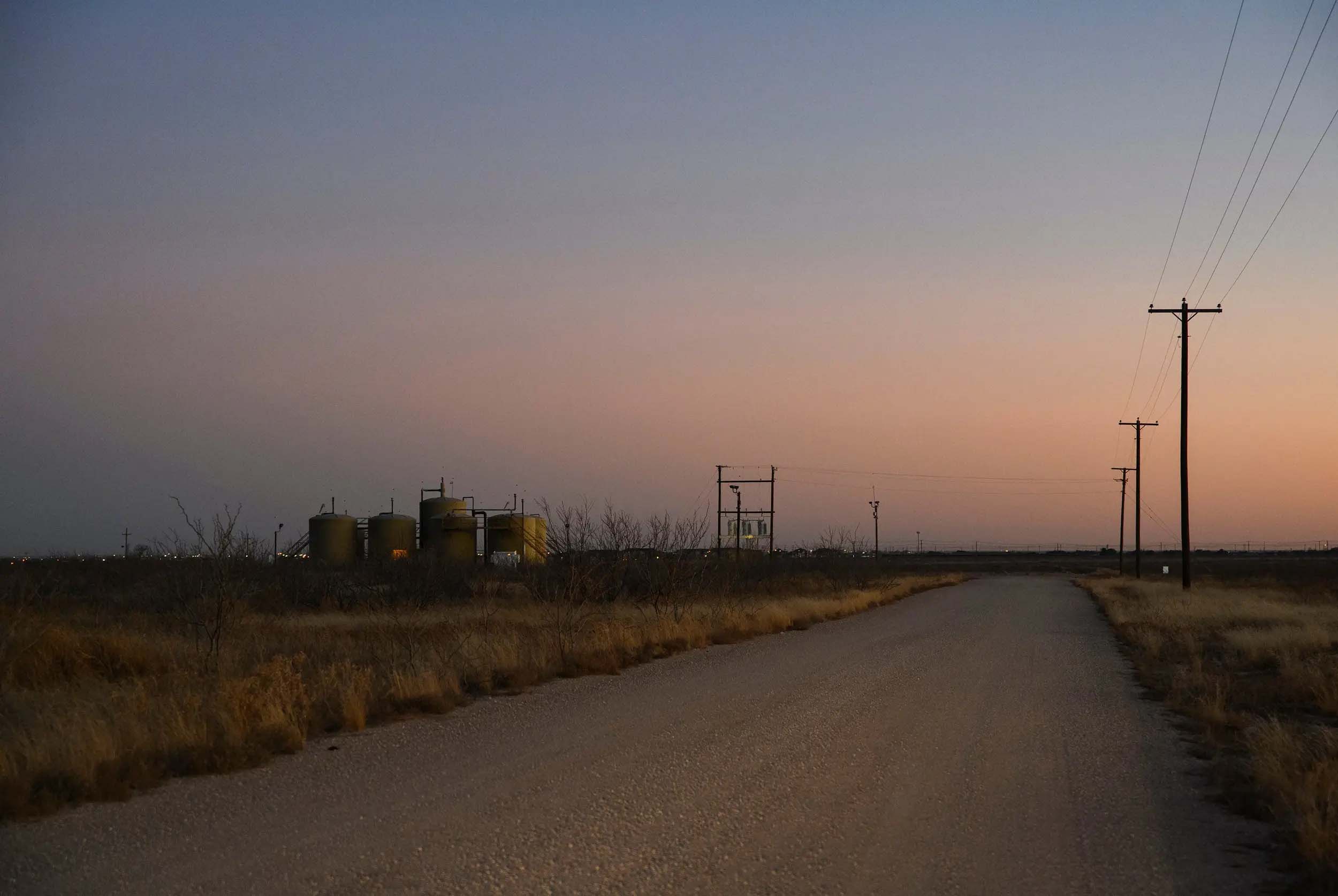
A 5.2 magnitude earthquake was recorded in West Texas early Wednesday near the border of Reeves and Culberson counties, according to the U.S. Geological Survey.
The earthquake that struck around 4:30 a.m. Central northwest of Pecos is tied for the fourth strongest recorded in Texas, according to the Bureau of Economic Geology at the University of Texas at Austin, and could be felt as far away as El Paso and Roswell, New Mexico.
The number and strength of earthquakes in West Texas has dramatically increased after years of hydraulic fracturing activity in the region. A routine practice of injecting the contaminated, salty water that comes up during the oil production process deep underground has been linked by scientists to the increase in seismic activity in oilfields.
Oil & Gas Industry Joins Fight Against Nuclear Waste Site Proposed in Southeast New Mexico
“The cross-country transport, consolidation, and interim storage of America’s entire inventory of spent nuclear fuel should only be considered once a permanent repository is underway and should never occur absent consent from affected communities,” – Nov 1. Letter from the Permian Basin Coalition (Occidental Petroleum, Concho Resources, Diamondback Energy and Fasken Oil and Ranch)
By Adrian Hedden, Carlsbad Current-Argus | November 7, 2023 currentargus.com
Some of the biggest oil and gas companies in the Permian Basin came out against a proposed nuclear waste facility in southeast New Mexico.
The basin spans southeast New Mexico and West Texas and is regarded as one of the most active fossil fuel regions in the world. It was forecast to produce about 5.9 million barrels of oil per day (bopd) in November, according to the Energy Information Administration. That is about half of the more than 12 million bopd of total U.S. output.
All that oil production is driven by some of the world’s largest energy companies establishing heavy operations in the region.
State program to protect waterways called costly but necessary
“…It’s imperative for the state to gain more autonomy, even if the price seems steep, because the U.S. Environmental Protection Agency recently issued a final rule that cemented the high court’s decision into official policy, leaving about 95% of New Mexico’s waters unprotected, the regulators said.”
By Scott Wyland, Santa Fe New Mexican | November 2, 2023 santafenewmexican.com
State regulators have estimated the time and money required to develop full authority to protect New Mexico’s rivers, streams and lakes in the aftermath of a U.S. Supreme Court decision that sharply narrowed the federal government’s power to regulate wetlands and waterways.
It will cost the state $7 million to $9 million a year to run a program that regulates all types of polluted discharges into state and federal waters and will take seven to 10 years to establish, state officials told the Buckman Direct Diversion Board on Thursday.
Creating a permitting program to cover discharges going into designated waters of the state could be achieved within five years, even though those waters make up a much larger array than the ones that fall under federal jurisdiction, Environment Department officials said.
The state program would be an important step, but only a step, of the river diversion, a joint city of Santa Fe and Santa Fe County project that draws water from the Rio Grande, they told the board.
LANL reports glove box breach, tritium drift weeks apart
“…Anti-nuclear activists contend the increasing number of glove box mishaps are part of a trend that will continue as the lab processes more plutonium, partly in pursuit of making the bowling ball-sized cores, or pits, that detonate warheads.
“It’s reasonable to assume it will accelerate with expanded [pit] production,” said Jay Coghlan, executive director of Nuclear Watch New Mexico.”
By Scott Wyland, Santa Fe New Mexican | November 1, 2023 santafenewmexican.com
A Los Alamos National Laboratory worker recently punctured a glove used to handle radioactive material in a sealed compartment, and wind blew airborne tritium into the liquid waste treatment facility a few weeks earlier, a federal watchdog reported.
The worker punctured the glove while handling a sharp measuring caliper instead of an electronic device that’s normally used for the task but was disabled, according to an October report by the Defense Nuclear Facilities Safety Board.
The breach contaminated a protective glove the worker was wearing but not the skin, and it didn’t cause an airborne radioactive release, the report said.
This is the second glove box breach in as many months and among a half-dozen the safety board has reported this year.
State, feds will seek independent expert over chromium plume threatening San Ildefonso Pueblo
“Scott Kovac, Nuclear Watch New Mexico’s operations director, agreed getting a third set of eyes on the project would be helpful, especially if this expert can suggest an alternative to the pump-and-treat method.”
By Scott Wyland, Santa Fe New Mexican | November 1, 2023 santafenewmexican.com
Federal officials said Wednesday they were pursuing an independent expert to help resolve their dispute with the state on how to clean up a decades-old toxic chromium plume under Los Alamos National Laboratory that has worsened since pumping was shut down seven months ago.
State regulators in March ordered the U.S. Energy Department to stop extracting tainted water, treating it and injecting it back into the 1.5-mile-long plume to dilute the pollution, contending this approach pushed the contaminants toward San Ildefonso Pueblo and deeper into the aquifer.
At a Wednesday meeting, a federal cleanup manager reiterated the Energy Department’s position the pump-and-treat method was reducing the hexavalent chromium and keeping it from spreading to the pueblo — and with the work halted, the contamination is rebounding.
“We’ve erased a lot of the gains we’ve made over the last few years of operating [by shutting down],” said Michael Mikolanis, head of the Energy Department’s environmental management in Los Alamos.
The worsening situation increases the urgency to bring in a third party that can provide fresh analysis and a different perspective to help move the state and federal agencies past their impasse, Mikolanis said.
Santa Fe New Mexican MY VIEW: See the Untold Chapter of the Oppenheimer Story
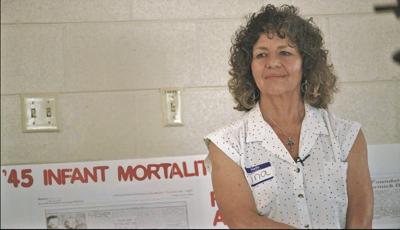
By Lois Lipman, SANTA FE NEW MEXICAN | October 21, 2023 santafenewmexican.com
President Joe Biden visited New Mexico a few weeks ago promoting “Bidenomics,” but for a group of New Mexicans from the Tularosa Basin, it was his brief exchange with Tina Cordova that was monumental.
Cordova is a descendant of the people who called a sparsely populated area of south-central New Mexico home — a group that would find not only their lives changed, but also the lives of their future children and grandchildren as a result of what happened the morning of July 16, 1945. So why did Biden stop to talk to Tina Cordova?
Cordova is a fourth-generation cancer survivor from the radiation of the Trinity Test and has been on a decadeslong crusade for the unwitting victims of the world’s first atomic bomb…
Amid current upgrades, commission foresees replacing LANL plutonium facility
An anti-nuclear watchdog group contends the pits’ main purpose is to be fitted into the new warheads — not to upgrade existing weapons — and expanding the arsenal requires more pits than the lab can make.
“The commission ill-advisedly wants a replacement for LANL’s plutonium pit production facility to help fuel the new nuclear arms race with new-design nuclear weapons,” Jay Coghlan, executive director of Nuclear Watch New Mexico, wrote in an email. “This is so tragic and unnecessary when no future pit production is scheduled to maintain the safety and reliability of the existing, extensively tested stockpile.”
SCOTT WYLAND, SANTA FE NEW MEXICAN | October 20, 2023 santafenewmexican.com
A congressional commission foresees eventually replacing Los Alamos National Laboratory’s plutonium facility — despite the billions of dollars being spent to refurbish it — as part of its recommended strategy to bolster the U.S. nuclear arsenal to keep pace with Russia and China.
The Congressional Strategic Posture Commission has released a 160-page report that pushes for the U.S. to boost its nuclear capabilities and conventional military to deter what it describes as increasingly aggressive and well-equipped adversaries, namely Russia and China.
One section calls for improving and expanding infrastructure to research, develop and make better weaponry at a higher volume — and buried in a footnote is a statement of how the upgrades would include replacing the lab’s plutonium facility, known as PF-4, for production and science.
No timeline is given for when PF-4 might be phased out, but the document confirms anti-nuclear critics’ longtime contention the federal government is spending billions of dollars on a facility with a finite life.
At the moment, this is the only facility in the country that can produce the bowling-ball-sized plutonium cores, or “pits,” to detonate warheads. Nuclear security officials want the lab to make 30 pits a year by 2030, saying they’re needed to modernize the arsenal and equip two new warheads being developed.
Two Businessmen Charged for $1M Kickback Scheme Involving Nuclear Weapons Components
An indictment was unsealed today in Kansas City, Kansas, charging two businessmen for an alleged scheme to fraudulently steer and award subcontracts by a major engineering firm for work on nuclear weapons manufacturing projects for the National Nuclear Security Administration’s Kansas City National Security Campus (KCNSC).
PRESS RELEASE, US DEPT. OF JUSTICE | October 19, 2023 justice.gov
According to court documents, from at least 2011 through approximately January 2021, Michael Clinesmith, 67, of Kansas, allegedly solicited and received kickbacks and bribes from Richard Mueller, 63, of Missouri, in exchange for steering subcontracts from Clinesmith’s employer to Mueller’s company (Subcontractor 1). Clinesmith, a long-tenured employee of a major engineering firm (Company 1) working at the KCNSC, was responsible for designing and procuring gages that were specially designed and manufactured to measure the components of nuclear weapon products. Clinesmith allegedly used his position and authority at Company 1 to steer gage subcontracts to Subcontractor 1 in exchange for Mueller paying him over $1 million for surreptitiously performing some or all of the work. Clinesmith is alleged to have told Mueller how much to bid on gage subcontracts that Company 1 awarded. Then, Clinesmith told his employer, Company 1, that those bids were fair and reasonable without disclosing that, in exchange for the subcontracts, Mueller would secretly funnel to Clinesmith the money awarded to Subcontractor 1. The indictment also alleges that Mueller lied to federal agents regarding the number of impacted subcontracts and his involvement in the scheme.
Russia’s Self-Destructive Move to De-Ratify the CTBT
“A [US] State Department spokesman said the Russian move “needlessly endangers the global norm against nuclear explosive testing,” and that the United States remains committed to observing a moratorium.”
By Daryl Kimball, Tony Fleming, and Kathy Crandall Robinson, ARMS CONTROL NOW | October 17, 2023 armscontrol.org
As with other critical arms control agreements, the 1996 Comprehensive Nuclear Test Ban Treaty (CTBT) is under threat due to inattention, diplomatic sclerosis, and worsening relations between nuclear-armed adversaries.
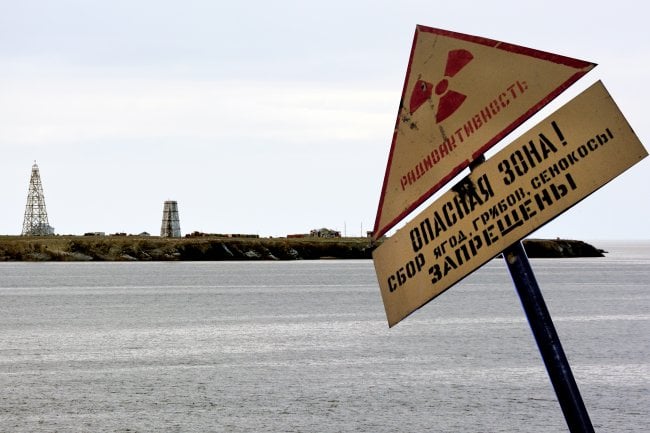
Disturbingly, but not surprisingly, Russian President Vladimir Putin has given members of the Russian Duma the green light to “un-ratify” the CTBT, ostensibly to “mirror” the posture of the United States toward the treaty and somehow pressure the United States to ratify the pact. Such a move would be a “self-defeating own goal,” that would set back efforts to bring the CTBT into force and raise questions about Russia’s intentions.
Continue reading
Nuclear weapons should be relics of the past – ALJAZEERA
“As the world marks the International Day against Nuclear Tests, we should all join the fight for global disarmament.”
By Karipbek Kuyukov, the Honorary Ambassador of The ATOM Project, ALJAZEERA | September 26, 2023 aljazeera.com
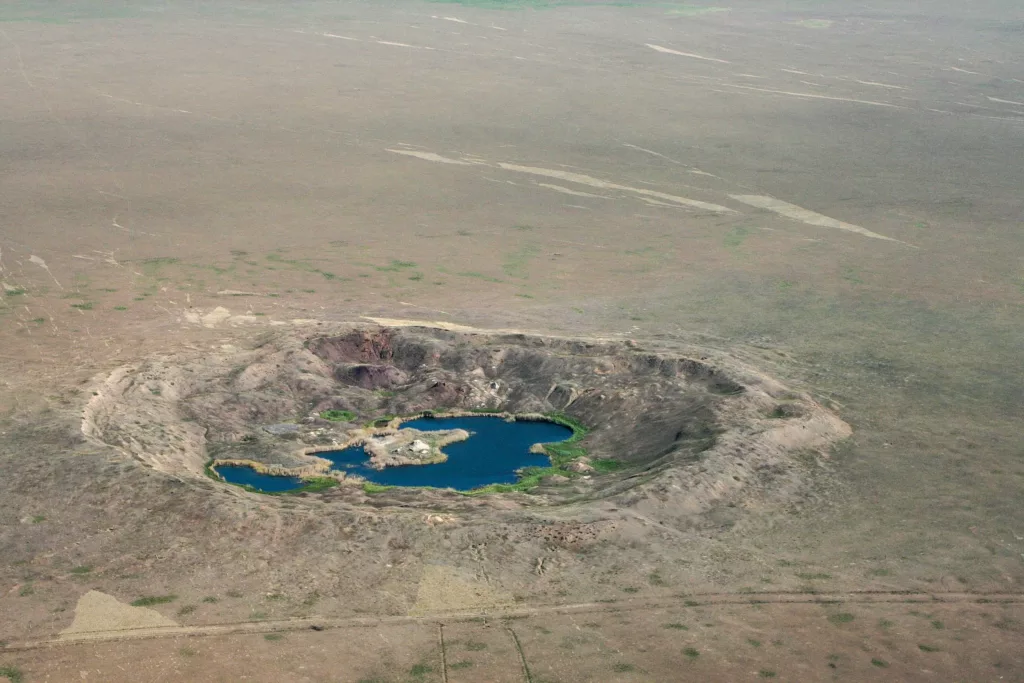
In the quiet and peaceful steppe of Kazakhstan, a dark and ominous legacy lingers beneath the surface. Over four decades between 1949 and 1989, 456 nuclear bombs were detonated by the Soviet Union at the Semipalatinsk Test Site in northern Kazakhstan.
While the echoes of nuclear explosions have long faded, the scars of nuclear testing run deep. More than 1.5 million people in Kazakhstan were exposed to the toxic fallout from those tests. Countless lives were irreversibly altered, and the environment was forever scarred. I am a living testament to the horrors of nuclear testing, as I was born without arms due to the effects of nuclear radiation.
Kazakhstan’s Enduring Legacy: From Nuclear Test Site to Leader in Disarmament – ASTANA TIMES
“Famous Kazakh painter Kuyukov, who was born without hands after being exposed to radiation in his mother’s womb, is one of the victims of the many health problems caused at the genetic level by exposure to radiation in the vast area surrounding the nuclear test site.”
BY KATSUHIRO ASAGIRI, KUNSAYA KURMET-RAKHIMOVA, ASTANA TIMES | September 13, 2023 astanatimes.com
Thirty-two years ago (Aug. 29, 1991), the Semipalatinsk Nuclear Test Site was permanently closed by a presidential decree in Kazakhstan, then a part of the Soviet Union, contrary to the position of the central government in Moscow. Kazakhstan subsequently gained independence from the Soviet Union and became the first country in the world to voluntarily turn itself to a non-nuclear weapons state from a nuclear weapons state by abolishing all of its nuclear arsenal, the fourth largest in the world at the time, and removing them to Russia.
Eighteen years later, in 2009, at the initiative of Kazakhstan, the UN General Assembly adopted a resolution designating August 29, the day the test site was closed, as the International Day Against Nuclear Tests. With the threat of nuclear weapons being used again becoming a reality, is it really possible to achieve a nuclear-free world? What should we know about the threat posed by the use and testing of nuclear weapons?
Full Meeting Recording: WIPP Draft Permit Renewal Public Hearing September 22
WIPP Draft Permit Renewal Public Hearing September 22
A permit to renew the operating permit for the Waste Isolation Pilot Plant is the subject of this hybrid public meeting hosted by the New Mexico Environment Department.
More information on WIPP and the permit renewal process: https://nukewatch.org/issues/wipp/
Posted by Nuclear Watch New Mexico on Friday, September 22, 2023
A permit to renew the operating permit for the Waste Isolation Pilot Plant is the subject of this hybrid public meeting hosted by the New Mexico Environment Department.
Bulletin of the Atomic Scientists: Yes, nuclear weapons are immoral. They’re also, practically speaking, useless.
“…Human beings make the threats, evaluate the threats, and decide how to respond. If human beings are prone to folly—and we are—and if human beings run the deterrence process, then nuclear deterrence is inherently flawed. It will fail. Over the long run it cannot be safe. Eventually, human failure will lead to a catastrophic nuclear war.”
By Ward Hayes Wilson, THE BULLETIN | September 19, 2023 thebulletin.org
Almost everyone who works actively against nuclear weapons is, at some level, appalled by the immorality of nuclear weapons. This makes sense because the indiscriminate killing of children, grandparents, people with disabilities, and a host of other ordinary folks is appalling.
As a result, the first argument that almost all activists reach for is moral. They bring forward hibakusha to put a human face on the immorality. They talk about the indigenous people who suffered during the mining and production of nuclear weapons. They show graphic pictures of the destruction, the burns, the radiation sickness, and other catastrophic damage done by the bombings. They say, in effect, “Look at the immorality!” They sometimes point to it with a hint of outrage in their voices. How can people not be moved by these horrible, immoral acts?
And yet here we are, 78 years later, in the midst of a second nuclear weapons arms race. Every nation that possesses nuclear weapons is either expanding or upgrading its nuclear arsenal. How can this be?
ARMS CONTROL TODAY: The Oppenheimer Legacy
ARMS CONTROL TODAY | September 2023 armscontrol.org
The film Oppenheimer, about the physicist who spearheaded the Manhattan Project, landed in theaters at an apt moment. After two decades during which many people thought the nuclear weapons genie had been tamed, the risks seem graver than ever and the public, at least for the time being, is engaged. Russian President Vladimir Putin, having launched a full-scale war against Ukraine, also has threatened to actually use nuclear weapons against states that might intervene in the conflict. Putin and the film have provoked a new debate with endless permutations. Click the link below for the collection of essays, where Stephen J. Cimbala explores the ambiguities of nuclear weapons, Chantell L. Murphy remembers the human beings erased by the film and Lisbeth Gronlund recalls the physicists who worked to limit the catastrophic weapons that their colleagues unleashed. This is a teachable moment if people can be made to understand the enduring danger of the nuclear weapons that J. Robert Oppenheimer and his team created and the need to restrain, and ultimately, eliminate them.—CAROL GIACOMO
Accelerating experimental nuclear physics with AI
The U.S. Department of Energy has funded a project to assist “the design of the ePIC detector at the future Electron-Ion Collider — a $2 billion state-of-the-art machine which will begin operations early in the next decade…and is expected to push the frontier of physics, develop new technologies and knowledge and accelerate advances in areas such as…national security.”
BY Antonella Di Marzio, WILLIAM & MARY UNIVERSITY NEWS. | September 13, 2023 news.wm.edu

Two projects are harnessing the power of machine learning and artificial intelligence to advance our understanding of the strong force. Image credit: Vertigo3d/iStock
If there were no strong nuclear force binding atomic particles together, matter as we know it would not exist. However, there are still several unresolved questions in the study of this fundamental interaction.
What’s Impacting Assurance in the U.S. Nuclear Stockpile?
“In justification of what could be $2.5 billion in spending for new test equipment and construction, NNSA said in the fiscal 2024 budget justification material, “Current diagnostics mostly confine [test] studies to early-implosion dynamic behavior [of plutonium], while the “new test beds will enable integral tests on late-stage implosion [of plutonium].”
“To meet the current information gap in subcritical experimenting, NNSA has turned to measurement devices known as Scorpius and Zeus to determine what happens when the tiny bit of plutonium reaches high pressure and density, during the late stages of implosion.”
OPINION BY Walter Pincus, THE CIPHER BRIEF | September 12, 2023 thecipherbrief.com
The goal for having Scorpius and Zeus active and operating to clear up today’s gap is 2030. It would create an international uproar if one or both failed and the U.S. had to revive underground testing for assurance that all nuclear weapons in its stockpile were still reliable and performing as designed.
It would also mean the U.S. would be violating the CTBT.
How the ‘nuclear football’ remains a potent symbol of the unthinkable
Former military aide Buzz Patterson, who handled the football during the Clinton Administration, “recalled grappling over how he would refuse the president’s command to launch nuclear weapons if he believed they were not of sound mind and body.”
“‘And I told myself internally many times ‘If I think he’s coming across as nuts, I don’t think I can participate in this, and so that’s how I rationalized it to myself, and I think a lot of the other aides thought the same kind of thing.””
BY Georgina DiNardo, C4ISRNET | September 12, 2023 c4isrnet.com
The nuclear threat has been dormant in the public’s mind since the end the Cold War. But renewed attention due to the wild success of the film “Oppenheimer’’ and rising tensions with Russia and China has brought the so-called nuclear football, the activation device for the U.S. arsenal, back into view.
The sighting of a military aide handling the football, closely following President Joe Biden as he exited a meeting with the United Kingdom’s prime minister on July 10, the day before the NATO summit during which the war in Ukraine was discussed, heightened already building tensions between NATO members and Russia.
Russia and the United States respectively lead the nuclear weapons race, both far ahead of the seven other countries that also have nuclear weapons, according to data obtained from the World Population Review.
2022 Select Highlighted Press Items
Nuclear Modernization is the ’Absolute Minimum,’ STRATCOM Commander Says | March 8, 2022
US tested hypersonic missile in mid-March but kept it quiet to avoid escalating tensions with Russia | April 4, 2022
Putin’s Nuclear Threats Are a Wake-Up Call for the World | March 15, 2022
Intelligence report determines that Russia's WMD threats will grow as losses mount in Ukraine | March 19, 2022
China and the United States: It’s a Cold War, but don’t panic | March 10, 2022
Russian military doctrine calls a limited nuclear strike “de-escalation.” Here’s why. | March 8, 2022
North Korea says it will strike with nuclear weapons if South attacks | April 4, 2022
Flying Under The Radar: A Missile Accident in South Asia | April 4, 2022
2022 News Articles
Seeking a world without nuclear weapons
Jan. 22 is the one-year anniversary of the U.N. Treaty on the Abolition of Nuclear Weapons entering into force as international law. Today, 59 countries have ratified the Treaty on the Abolition of Nuclear Weapons, with several more countries on the verge of doing the same. The importance of this cannot be overstated. With more and more countries outlawing everything to do with nuclear weapons, it becomes increasingly harder for the nine countries possessing these weapons to defend their continued existence.
recorder.com | BY SUSAN LANTZ January 22, 2022
For instance, Germany, Norway, Sweden, Belgium, Netherlands, Italy are all likely to sign onto the Treaty on the Abolition of Nuclear Weapons eventually, with strong support already in their populations and parliaments. The United States currently has nuclear weapons in Belgium, Germany and Italy. After these countries ratify the treaty, the United States will be required to remove its weapons.
At doom’s doorstep: It is 100 seconds to midnight
2022 Doomsday Clock Statement
It is 100 seconds to midnight
© Bulletin of the Atomic Scientists Science and Security Board | January 20, 2022
To: Leaders and citizens of the world
Re: At doom’s doorstep: It is 100 seconds to midnight
Date: January 20, 2022
Last year’s leadership change in the United States provided hope that what seemed like a global race toward catastrophe might be halted and—with renewed US engagement—even reversed. Indeed, in 2021 the new American administration changed US policies in some ways that made the world safer: agreeing to an extension of the New START arms control agreement and beginning strategic stability talks with Russia; announcing that the United States would seek to return to the Iran nuclear deal; and rejoining the Paris climate accord. Perhaps even more heartening was the return of science and evidence to US policy making in general, especially regarding the COVID-19 pandemic. A more moderate and predictable approach to leadership and the control of one of the two largest nuclear arsenals of the world marked a welcome change from the previous four years.
Still, the change in US leadership alone was not enough to reverse negative international security trends that had been long in developing and continued across the threat horizon in 2021
How Martin Luther King, Jr.’s multifaceted view on human rights still inspires today
The legendary civil rights activist pushed to ban nuclear weapons, end the Vietnam War, and lift people out of poverty through labor unions and access to healthcare.
“It cannot be disputed that a full-scale nuclear war would be utterly catastrophic,” he told Ebony magazine in an interview. “The principal objective of all nations must be the total abolition of war.”
© National Geographic | BY EMILY MARTIN January 17, 2022

Virtual Press Conference & Link to Santa Fe Archbishop John C. Wester’s New Pastoral Letter “Living in the Light of Christ’s Peace: A Conversation Toward Nuclear Disarmament”
Living in the Light of Christ’s Peace – A conversation toward nuclear disarmament
Archbishop John C. Wester’s live press conference to discuss his pastoral letter on the growing need for disarmament.
PASTORAL LETTER
The Time for Nuclear Disarmament is Now
“We need nuclear arms control, not an escalating nuclear arms race.”
Santa Fe New Mexican: MY VIEW JOHN C. WESTER | By John C. Wester santafenewmexican.com | January 15, 2022
In September 2017, I traveled to Japan and visited Hiroshima and Nagasaki. It was a somber, sobering experience as I realized that on Aug. 6, 1945, humanity crossed the line into the darkness of the nuclear age. Historically, the Archdiocese of Santa Fe has been part of a peace initiative, one that would help make sure these weapons would never be used again. I believe it is time to rejuvenate that peace work.
We need to sustain a serious conversation in New Mexico and across the nation about universal, verifiable nuclear disarmament. We can no longer deny or ignore the dangerous predicament we have created for ourselves with a new nuclear arms race, one that is arguably more dangerous than the past Cold War. In the face of increasing threats from Russia, China and elsewhere, I point out that a nuclear arms race is inherently self-perpetuating, a vicious spiral that prompts progressively destabilizing actions and reactions by all parties, including our own country.
US Archbishop Warns of New Nuclear Arms Race
Archbishop of Santa Fe in New Mexico: [Nuclear] Armament a “diabolical spiral”
Source (Translated from German): kathpress.at | January 13, 2022
WASHINGTON, 01/13/2022 (KAP) The Catholic Archbishop of Santa Fe, New Mexico, John Wester, has issued a strong warning of a new nuclear arms race. “We need nuclear arms control, not an escalating nuclear arms race,” he says in a recent pastoral letter, according to the Catholic News Agency (KNA). Nuclear armament is a “diabolical spiral” that endangers everyone.
Wester’s diocese of New Mexico is particularly hard hit by nuclear armaments. Nuclear weapons are manufactured at Los Alamos and at Sandia National Laboratories. The US government stores nuclear weapons at Kirtland Air Force Base in Albuquerque.
New Mexico Church Official Urges Nuclear Disarmament Talks
The head of one of the oldest Roman Catholic dioceses in the U.S. says now is the time to rejuvenate a global conversation about the need for nuclear disarmament and avoiding a new nuclear arms race.”
“We can no longer deny or ignore the extremely dangerous predicament of our human family and that we are in a new nuclear arms race far more dangerous than the first,” he said. “We need nuclear arms control, not an escalating nuclear arms race.”
© Associated Press | By SUSAN MONTOYA BRYAN, Associated Press | January 11, 2022
ALBUQUERQUE, N.M. (AP) — The head of one of the oldest Roman Catholic dioceses in the United States says now is the time to rejuvenate and sustain a global conversation about the need for nuclear disarmament and how to develop ways to avoid a new nuclear arms race.
Santa Fe Archbishop John Wester released a lengthy pastoral letter on the subject Tuesday, noting during a virtual news conference that Los Alamos National Laboratory — the birthplace of the atomic bomb — is preparing to ramp up production of the plutonium cores used in the nation’s nuclear arsenal.
Wester called the arms race a vicious spiral.
Archbishop of Santa Fe Issues Pastoral Letter in Support of TPNW
On 11 January 2022, Archbishop John C. Wester of Santa Fe, New Mexico circulated a letter in support of nuclear weapons abolition and the Treaty on the Prohibition of Nuclear Weapons to all the parishes in his diocese.
![]() ICAN Campaign News | January 11, 2022
ICAN Campaign News | January 11, 2022
In the letter, Wester outlines the risks and consequences of the new nuclear arms race and highlights the unique role of New Mexico in the U.S. nuclear weapons complex and of the Santa Fe diocese to support nuclear disarmament. He calls for an open dialogue on nuclear disarmament and redirecting resources from the nuclear arms race to peaceful objectives, like cleaning up nuclear contamination and addressing climate change.
New Mexico is at the heart of the U.S. nuclear weapons complex, with two major nuclear weapons laboratories – the Los Alamos and Sandia National Laboratories- located in the state and nearly 40% of the Department of Energy’s nuclear weapons budget allocated for work in New Mexico. It was also the site of the first nuclear test explosion in July 1945 and has the largest repository of nuclear weapons in the country.
The Archdiocese of Santa Fe has a “special responsibility” he states, to support the TPNW and to encourage its active implementation.
“It is the duty of the Archdiocese of Santa Fe, the birthplace of nuclear weapons, to support that Treaty while working toward universal, verifiable nuclear disarmament,” Wester writes.
Waste Isolation Pilot Plant struggles to control costs, per annual performance evaluation
“Conducted by the DOE’s Carlsbad Field Office (CBFO), the evaluation called for improvements in cost control, schedule and risk management, along with work planning and control processes.”
By Adrian Hedden Carlsbad Current-Argus January 12, 2022 currentargus.com
Lingering struggles to complete construction projects on schedule while controlling costs at the Waste Isolation Pilot Plant factored into the U.S. Department of Energy’s annual fee allotment to primary contractor Nuclear Waste Partnership (NWP).
NWP earned 67 percent of its potential, performance-based fee – about $10.9 million of about $16.2 million available to the contractor in Fiscal Year 2021.
About $7.6 million of the fee was awarded for specific task incentives with $10.9 million available, and the other $3.3 million came from the subjective portion of the evaluation from a total offering of $5.3 million.
Archbishop Wester to Release Pastoral Letter on Tuesday Calling for Nuclear Disarmament
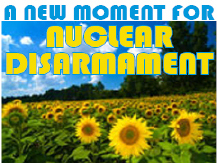

Pax Christi USA paxchristiusa.org | January 10, 2021
NOTE: The following press release is from the Archdiocese of Santa Fe announcing a press conference on Tuesday, January 11th, where the Archbishop will discuss his pastoral letter, “Living in the Light of Christ’s Peace: A Conversation Toward Nuclear Disarmament”. Pax Christi USA has eagerly anticipated the archbishop’s letter and we wanted to share the release with our membership who can watch the press conference at the link provided in the email. As we approach the 25th anniversary of our statement on the morality of nuclear deterrence, signed by 75 U.S. Catholic bishops in 1998, we welcome this extraordinary, prophetic letter and look forward to the conversation it generates within the U.S. Catholic Church, supporting Pope Francis’ statement at Hiroshima in 2019, “The use of atomic energy for purposes of war is immoral, just as the possessing of nuclear weapons is immoral.”
ALBUQUERQUE – Monday, January 10, 2022 – IMMEDIATE RELEASE – Most Reverend John C.Wester, Archbishop of Santa Fe, will hold a press conference for accredited media to discuss is pastoral letter, “Living in the Light of Christ’s Peace: A Conversation Toward Nuclear Disarmament” on Tuesday, January 11, 2022 at 9:00 a.m. MST via Zoom (https://us02web.zoom.us/j/83010373874?pwd=QTkvTkZpNDRlbDBiNWd3dU9IRnhWUT09). The press conference will be livestreamed at https://youtu.be/kHS2C1wIBeQ.
Archbishop Wester will release his pastoral letter on the urgent need for nuclear disarmament and avoiding a new nuclear arms race. Pope Francis has made clear statements about the immorality of possessing nuclear weapons, moving the Church from past conditional acceptance of “deterrence” to the moral imperative of abolition. The Archdiocese of Santa Fe has a special role to play in advocating for nuclear disarmament given the presence of two nuclear weapons laboratories and the United States of America’s largest repository of warheads located within its boundaries. He therefore believes the archdiocese has a unique role to play in encouraging a future world free of nuclear weapons.
Archbishop Wester states, “The Archdiocese of Santa Fe has a special responsibility not only to support the Treaty on the Prohibition of Nuclear Weapons, but also to encourage its active implementation.” He goes on to “…invite us to have a conversation together about what it means to follow the risen, nonviolent Jesus who calls us to be peacemakers, put down the sword, and love everyone, even the enemies of our nation.”
Archbishop Wester’s pastoral letter has the support of four Nobel Peace Prize laureates.
Key Lab Used for WWII Atomic Bomb Development Still 14 Years From Clean Up, Maybe More
Watchdog groups said it wasn’t until the state sued in February 2021 that the DOE proposed boosting the cleanup budget at the lab by about one-third. Before that, budgets were flat, with the groups arguing that DOE had no incentive to seek more funding.
“The conclusion I draw from it is the New Mexico Environment Department gets a lot more from the stick than it does from the carrot with respect to making the laboratory and DOE truly committed to comprehensive cleanup,” said Jay Coghlan, executive director of Nuclear Watch New Mexico.
BY CHARLOTTE TRATTNER , NEWSWEEK | January 7, 2022 newsweek.com
Concerns Persist About Pace of Cleanup at US Nuclear Lab
Watchdog groups said it wasn’t until the state sued in February 2021 that the DOE proposed boosting the cleanup budget at the lab by about one-third. Before that budgets were flat, with the groups arguing that DOE had no incentive to seek more funding.
“The conclusion I draw from it is the New Mexico Environment Department gets a lot more from the stick than it does from the carrot with respect to making the laboratory and DOE truly committed to comprehensive cleanup,” said Jay Coghlan, executive director of Nuclear Watch New Mexico.
BY SUSAN MONTOYA BRYAN, Associated Press | January 7, 2022 usnews.com

Officials at one of the nation’s top nuclear weapons laboratories are reiterating their promise to focus on cleaning up Cold War-era contamination left by decades of research and bomb-making.
DOE/NNSA To Start New LANL Site-Wide Environmental Impact Statement
During the question and answer period, Nuclear Watch New Mexico executive director Jay Coghlan said he was fascinated to hear that there was some funding allocated for a new SWEIS.
“The last one was in 2008 and it’s woefully outdated. To use NEPA terms, there’s a lot of new information and changed circumstances,” Coghlan said. “…And then there’s the question of the scope of the SWEIS, which would by definition imply it should consider the full range of issues from cleanup to pit production. What more can be said about a new SWEIS for Los Alamos (National Laboratory) at this time because as far as I know this is the first inkling whatsoever that there will be a new one?”
BY MAIRE O’NEILL, LOS ALAMOS REPORTER | January 6, 2022 losalamosreporter.com
Una Introducción a Hanford
El Sitio Nuclear de Hanford es el lugar más contaminado de los EE. UU. ¿Le interesa saber por qué? Pues hay suerte, porque tenemos una presentación que explica este asunto y más. Haga clic para ver el video acerca de la historia y la limpieza del Sitio Nuclear de Hanford. Es una buena manera de aprender más sobre un lugar contaminado pero poco conocido en el estado de Washington. ¡Anímate a verlo!
Yucca Mountain remains in debate over nuclear waste storage
“I’ve always fought misguided efforts to deposit nuclear waste in Nevada, and I’ll keep working with the Nevada delegation to pass my consent-based siting bill that would ensure these dangerous materials are never dumped on our state,” – Catherine Cortez Masto, D-Nev., a former state attorney general who also has fought federal efforts to build a repository at Yucca Mountain.”
Santa Fe New Mexican / Gary Martin Las Vegas Review-Journal | January 1, 2021
LAS VEGAS, Nev. — Mounting opposition to proposed nuclear waste storage sites in Texas and New Mexico has kept Yucca Mountain in Nevada in the national debate over what to do with the growing stockpile of radioactive material scattered around the country.
The Biden administration is opposed to Yucca Mountain and announced plans this month to send waste to places where state, local and tribal governments agree to accept it. That stance is shared by Nevada elected officials, tribal leaders and business and environmental groups.
But until the 1987 Nuclear Waste Policy Act is changed by Congress, the proposed radioactive waste repository 90 miles north of Las Vegas remains the designated permanent storage site for spent fuel rods from commercial nuclear plants.
“That’s what worries me. Until you get a policy in place, it will always be something you have to watch,” U.S. Rep. Dina Titus, D-Nev., told the Las Vegas Review-Journal.
An expert on atomic testing and American politics, Titus as a professor at the University of Nevada, Las Vegas wrote a 1986 book on Nevada’s nuclear past.
As an elected state and congressional lawmaker, she has opposed a permanent storage facility at Yucca Mountain.
Titus introduced legislation in past sessions of Congress that adopts recommendations by a 2012 Blue Ribbon Commission under the Obama administration to send the waste to states that want it.
Spent Fuel: The Risky Resurgence of Nuclear Power
[Letter from Washington]
“In the face of escalating alarm about climate change, the siren song of “clean and affordable and reliable” power finds an audience eager to overlook a business model that is dependent on state support and often greased with corruption; failed experiments now hailed as “innovative”; a pattern of artful disinformation; and a trail of poison from accidents and leaks (not to mention the 95,000 tons of radioactive waste currently stored at reactor sites with nowhere to go) that will affect generations yet unborn.”
BY: Andrew Cockburn © HARPER’S | From the January 2022 Issue
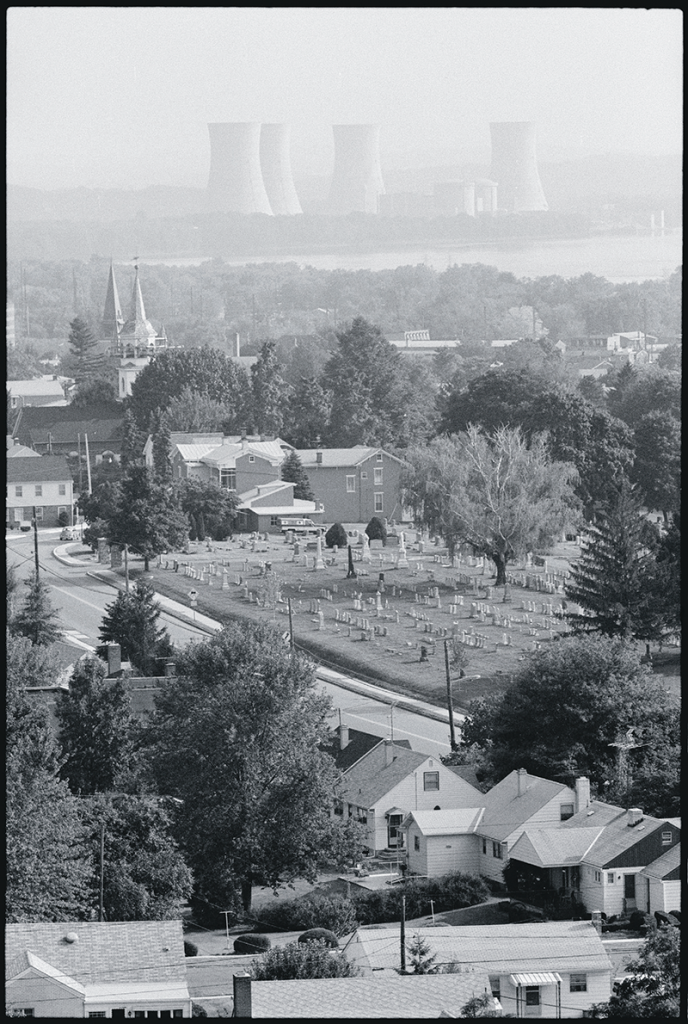 Last June, Bill Gates addressed a crowd of politicians and reporters in Cheyenne, Wyoming. “Fifteen years ago I assembled a group of experts . . . to solve the dual problems of global energy poverty and climate change,” the sweater-clad multibillionaire declared, speaking by video. “It became clear that an essential tool to solving both is advanced nuclear power.” But the technology, he continued, needed to become safer and less expensive. To this end, he had promised to invest $1 billion in TerraPower, a company he founded in 2008 to develop small modular reactors that can be churned out on an assembly line. He was now happy to announce the construction of a plant on the site of a defunct coal facility in Wyoming.
Last June, Bill Gates addressed a crowd of politicians and reporters in Cheyenne, Wyoming. “Fifteen years ago I assembled a group of experts . . . to solve the dual problems of global energy poverty and climate change,” the sweater-clad multibillionaire declared, speaking by video. “It became clear that an essential tool to solving both is advanced nuclear power.” But the technology, he continued, needed to become safer and less expensive. To this end, he had promised to invest $1 billion in TerraPower, a company he founded in 2008 to develop small modular reactors that can be churned out on an assembly line. He was now happy to announce the construction of a plant on the site of a defunct coal facility in Wyoming.
Gates and other backers extoll the promise of TerraPower’s Natrium reactors, which are cooled not by water, as commercial U.S. nuclear reactors are, but by liquid sodium. This material has a high boiling point, some 1,600 degrees Fahrenheit, which in theory enables the reactor to run at extreme temperatures without the extraordinary pressures that, in turn, require huge, expensive structures. “It’s smaller, cheaper, and inherently safe,” Jeff Navin, the director of external affairs at TerraPower, told me.
Will Construction be Delayed on the New Shaft at WIPP?
“The Environment Department “should be equally considerate towards the judicial review process as it was in the administrative permit modification process, to ensure the courts have sufficient time to review objectively the facts and arguments associated with the appeal.” – Steve Zappe, a member of the Environment Department who worked on WIPP for 17 years.”
Concerned Citizens for Nuclear Safety | December 23, 2021
Two appeals have been filed in the New Mexico Court of Appeals to challenge the decision by New Mexico Environment Department Secretary James Kenney to approve the new shaft at the Waste Isolation Pilot Plant (WIPP). Concerned Citizens for Nuclear Safety filed the second appeal on November 29th. On November 9th, Southwest Research and Information Center and Cynthia Weehler had filed the first appeal. Visit: env.nm.gov/opf/docketed-matters/, scroll down to HWB 21-02 – APPEAL: Waste Isolation Pilot Plant: Class 3 Permit Modification Request, “Excavation of a New Shaft and Associated Connecting Drifts.
SRIC and Weehler also asked Secretary Kenney for a stay, that is, a delay, of shaft construction until the Court of Appeals rules on their appeal. On the stay motion, Secretary Kenney can grant, or deny, or take no action. If he does not grant the stay, or if he takes no action by January 10th, a stay motion then could be filed with the Court of Appeals. Visit: env.nm.gov/opf/docketed-matters/ , scroll down to HWB 21-02 –Waste Isolation Pilot Plant: Class 3 Permit Modification Request, “Excavation of a New Shaft and Associated Connecting Drifts.
Unfortunately, key documents are missing, including the SRIC/Weehler Motion for Stay Pending Appeal, the Hearing Officer’s Report and the Secretary’s Final Order.
The stay motion was supported by three affidavits. Cynthia Weehler stated that she purchased her home near U.S. Highway 285 knowing that the WIPP Permit anticipated that shipments to WIPP would end in 2024. Now, the WIPP expansion plan that requires the new shaft “would result in thousands of additional shipments coming near my house for many decades.” She is very concerned that accidents could result in health effects and “such shipments will reduce my property values.”
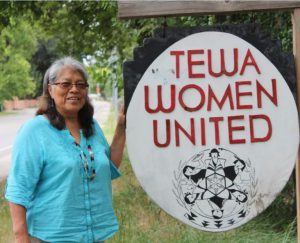 Kathleen Wan Povi Sanchez, an Elder from the Tewa Pueblo of San Ildefonso and among the founding mothers of Tewa Women United, stated in her affidavit that an increase in waste transportation near two schools located on New Mexico Highway 502 would endanger the health of Pueblo children in attendance. Further, “The WIPP expansion plan would result in thousands of new shipments using [] Highway 502 for decades transporting plutonium from the Pantex Plant near Amarillo, Texas to [Los Alamos National Laboratory], and from [Los Alamos] to the Savannah River Site, followed by shipments from that site to WIPP.”
Kathleen Wan Povi Sanchez, an Elder from the Tewa Pueblo of San Ildefonso and among the founding mothers of Tewa Women United, stated in her affidavit that an increase in waste transportation near two schools located on New Mexico Highway 502 would endanger the health of Pueblo children in attendance. Further, “The WIPP expansion plan would result in thousands of new shipments using [] Highway 502 for decades transporting plutonium from the Pantex Plant near Amarillo, Texas to [Los Alamos National Laboratory], and from [Los Alamos] to the Savannah River Site, followed by shipments from that site to WIPP.”
Some LANL plutonium stored in vulnerable containers
An anti-nuclear group said this type of plutonium isn’t explosive but would be hazardous to breathe.
It’s possible the lab made this type of plutonium a lesser priority while ramping up pit production, and now it plans to take big shipments, said Scott Kovac, research and operations director for the nonprofit Nuclear Watch New Mexico.
“That’s a huge amount to accept,” Kovac said. “Now they’re asking NNSA to say that’s OK.”
BY SCOTT WYLAND, THE SANTA FE NEW MEXICAN | December 23, 2021 santafenewmexican.com
Los Alamos National Laboratory wants to store high heat-emitting plutonium in uncertified containers that, if breached in a fire or an earthquake, could expose workers and the public to hazardous doses of radiation, according to a government watchdog’s report.
The lab’s primary contractor seeks a waiver to store large quantities of plutonium-238 in unapproved containers that, if breached, could expose the public to 83 to 378 rem, the Defense Nuclear Facilities Safety Board said in a December report, referring to the unit that measures radiation absorbed in living tissue.
US Still Doesn’t Know How and Where It Will Store Its Growing Pile of Nuclear Waste
The estimated cost of handling the degrading radioactive material is rising steadily — $512 billion at last count.
“DoE is now running up against a statutory limit for how much waste it can store in the space, so it recently changed its counting method to exclude space between storage drums as storage space. New Mexico regulators approved the change but the matter is being challenged in court.
“They knocked a third out of it with a slight of hand. That will allow them a lot more waste,” complains Scott Kovac, operations & research director of Nuclear Watch New Mexico (NWNM), a local anti-nuclear group.”
BY CHARLES PEKOW, EARTH ISLAND JOURNAL | December 23, 2021 earthisland.org
A nuclear watchdog group wants a state commission to nullify its decision on a permit for Los Alamos National Laboratory’s radioactive liquid waste treatment facility, arguing the panel’s former chairwoman backed a ruling favorable to the lab while she sought a job with the federal agency that oversees it.
U.S. Urges Japan Not to Join Nuclear Ban Treaty Meeting
“Germany’s move [planning to to attend the meeting as an observer] has put Japan — which has stated it aspires to a world free of nuclear weapons as the only country to have suffered the devastation of atomic bombings — in the spotlight. Both countries are key U.S. allies that rely on American nuclear forces for protection.”
© KYODO NEWS | December 20, 2021
The United States has urged Japan not to attend as an observer the first meeting of signatories to a U.N. treaty banning nuclear weapons, according to U.S. government sources, reflecting Washington’s opposition to the pact.
The Japanese government has suggested it will come into line with the United States and take a cautious approach to the issue, the sources said. Prime Minister Fumio Kishida told a parliamentary committee on Thursday that Tokyo has no “concrete plans” to attend the meeting as an observer.
The sources said the U.S. administration of President Joe Biden made the request to Japan through diplomatic channels after German political parties announced Nov. 24 that the deal for the new ruling coalition included taking part as an observer at the meeting scheduled for March in Vienna.
Maybe because of the request, Kishida also suggested last week that participation in the meeting would be premature “before building a relationship of trust with President Biden.”
Archbishop calls for nuclear disarming
At least 125 people were present for the service, many bearing roses in honor of the Lady of Guadalupe. Among them was Karen Weber, who said it’s “highly symbolic” for Wester to speak out on the “abolishment of nuclear weapons.”
SANTA FE NEW MEXICAN By Robert Nott rnott@sfnewmexican.com
Looking up at the sky as a young teen one day in Daly City, Calif., Archbishop John C. Wester had one thought as he saw military planes overheard.
Were they ours, or were they Russian planes?
The year was 1962, perhaps the first time nuclear war between the two superpowers seemed likely to erupt as the Cuban Missile Crisis played out and students were taught to prepare for an atomic attack by diving under their desks at schools.
“I don’t think going under our desks was very helpful,” Wester said Sunday in Santa Fe, moments before issuing a call for the world to rid itself its nuclear weapons.
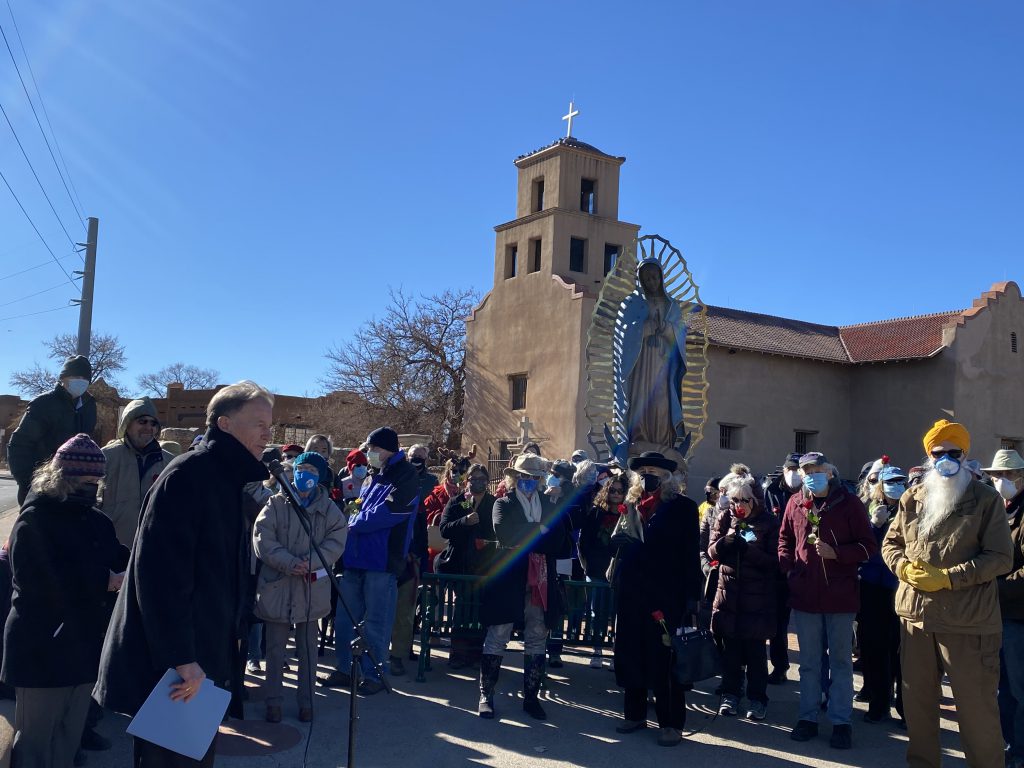
Now, some 60 years later, he said he wants to do more to end the threat of an atomic war. Wester spoke and prayed during a 30-minute prayer service and ceremony at the Shrine of Our Lady of Guadalupe before he unveiled a sign bearing an image of Pope Francis and a quote uttered by the pope in Hiroshima in 2020: “The possession of nuclear arms is immoral.”
Wester said “our archdiocese needs to be facilitating, encouraging an ongoing conversation” about nuclear disarmament.
Why Los Alamos lab is working on the tricky task of creating new plutonium cores
“While the labs work on relearning high-stakes industrial techniques for terrifying weapons, it is estimated that most of the existing warheads will remain fully functional for at least 100 years after first manufacture. Given an arsenal of hundreds of deployed warheads, the stakes of failure to modernize are that, in the event of the worst war humanity has ever known, some warheads might fail to detonate, letting millions live.”
BY KELSEY D. ATHERTON | POPULAR SCIENCE popsci.com December 18, 2021
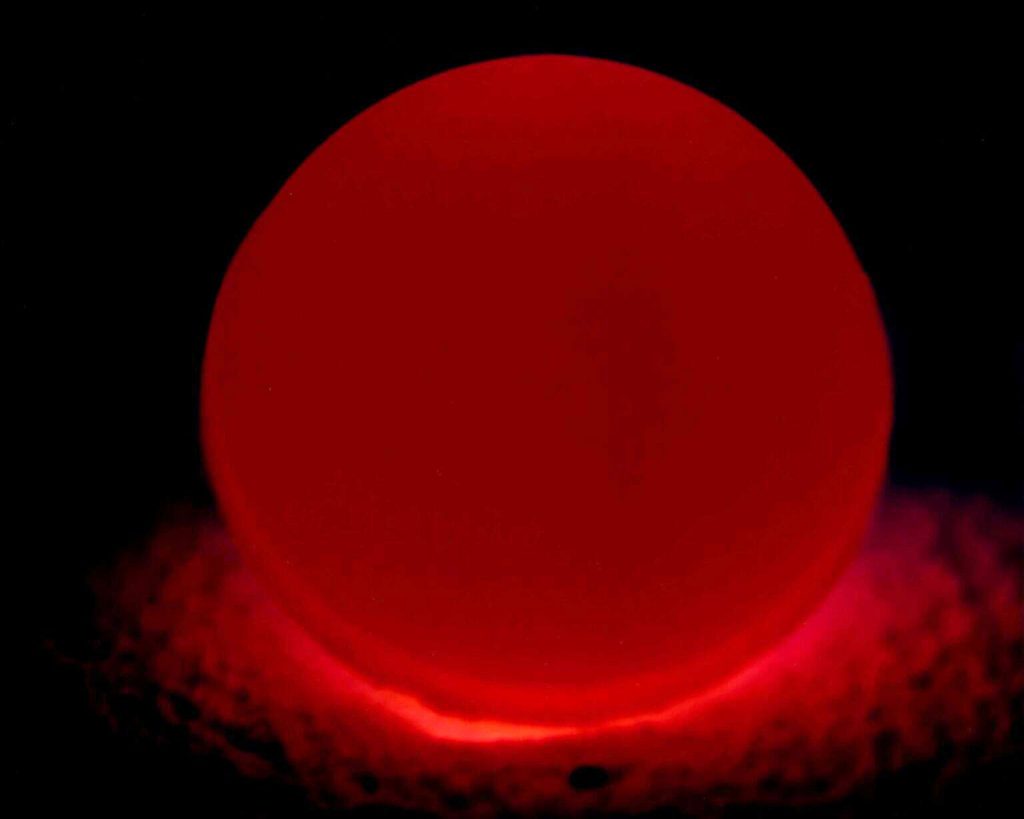
Plutonium pits, the potent hearts of modern nuclear weapons, degrade over time. As these cores decay, so too does the certainty that they will work as designed when detonated. Los Alamos National Laboratory, the organization that grew out of the Manhattan Project to design and equip the nuclear arsenal of the Cold War, is advancing towards its goal of manufacturing 30 new plutonium pits to go inside nuclear bomb cores by 2026.
The project is both a specific manufacturing challenge, and an opening for the United States to newly consider how many warheads it needs on hand to achieve its stated strategic objectives.
Inside a nuclear warhead, a plutonium pit is crucial to setting off the sequence of reactions that make a thermonuclear explosion. Inside the pit is a gas, like deuterium/tritium, and around the pit is chemical explosive. When the chemical explosive detonates, it compacts the plutonium around the gas until the core is dense enough to trigger a fission reaction. What makes a warhead thermonuclear, as opposed to just atomic, is that this is combined in the same warhead with a uranium core, which creates a fusion explosion.
Hundreds of Scientists Ask Biden to Cut the U.S. Nuclear Arsenal
The letter argued that “by making clear that the United States will never start a nuclear war, it reduces the likelihood that a conflict or crisis will escalate to nuclear war.” And it would demonstrate, they argued, that the United States was committed to the Nuclear Non-Proliferation Treaty, which obliges the nuclear-armed states to move toward reducing their arsenals.
Written By: Jesus Jiménez © 2021 The New York Times Company The New York Times | December 17, 2021
Nearly 700 scientists and engineers, including 21 Nobel laureates, asked President Joe Biden on Thursday to use his forthcoming declaration of a new national strategy for managing nuclear weapons as a chance to cut the US arsenal by a third and to declare, for the first time, that the United States would never be the first to use nuclear weapons in a conflict.
The letter to Biden also urged him to change, for the first time since President Harry S. Truman ordered the dropping of the atomic bomb over Hiroshima, the American practice that gives the commander in chief sole authority to order the use of nuclear weapons. The issue gained prominence during the Trump administration, and the authors of the letter urged Biden to make the change as “an important safeguard against a possible future president who is unstable or who orders a reckless attack.”
Today I had the honor of delivering a letter on nuclear weapons issues to @POTUS signed by 697 scientists & engineers, including 21 Nobel laureates & 69 members of the National Academies. It recommends four steps to reduce the likelihood of nuclear war: https://t.co/o9ktgLlOxd pic.twitter.com/stjn9BJCCu
— Stephen Young (@StephenUCS) December 16, 2021
Politico-Opinion | Congress Approved $778 Billion for the Pentagon. That Means We Can Afford Build Back Better.
Some senators say Biden’s social and climate bill costs too much, but comparing it to the military spending plan they just passed suggests otherwise.
This week, the families of 61 million children received their final payments under the expanded Child Tax Credit. This credit has kept 10 million children above the poverty line, but it is expiring as the Senate delays a vote to renew it through the Build Back Better Act.
Instead, on the same day these last payments went out, the Senate voted to approve a $778 billion military spending budget — four times as much as the annual cost of the entire Build Back Better plan. Yet we’ve heard endlessly about how it’s Build Back Better that needs to be gutted so we can skimp and save.
Germany’s Baerbock pushes for nuclear disarmament
German Foreign Minister Annalena Baerbock called for a “new momentum” to nuclear disarmament as she met with her Swedish counterpart with an eye toward a review of a non-proliferation treaty.
By Ali Harb Aljazeera aljazeera.com
Germany and Sweden have paired up to find ways to get the world’s nuclear powers to move toward committing to disarmament. The foreign ministers met in Stockholm to plot the way forward ahead of next month’s review of the Non-Proliferation Treaty (NPT).
Baerbock has been in talks with her Swedish counterpart Ann Linde and met with the Stockholm Initiative, a group of 16 countries seeking to get rid of nuclear weapons.
“Our joint goal is clear: a world free of atomic weapons,” Baerbock said during a press conference with Linde.
“Our message to the review conference will be clear: Nuclear weapons countries have to push ahead with nuclear disarmament,” read a statement from the initiative, calling for an irreversible, transparent end to nuclear weapons subject to oversight.
Protesters Denounce French Push to Label Nuclear as Sustainable Energy
“By taking the lead of the toxic alliance between fossil gas and nuclear (energy) at a European level, Emmanuel Macron clearly sides with the polluters’ camp. Nuclear is not a green energy: it produces radioactive waste that piles up across the country”
By Reuters | December 14, 2021
PARIS (Reuters) – Demonstrators unfurled a banner declaring “Gas & nuclear are not green” outside France’s foreign ministry on Tuesday in protest at a government drive to label nuclear energy and fossil gas as sectors for climate-friendly investment.
One of the about 20 protesters, wearing a mask of President Emmanuel Macron, chained himself to a gas bottle and a nuclear barrel outside the ministry’s headquarters in Paris. Another held a banner that read “Macron shame on you.”
The European Union is preparing a rulebook on climate friendly investments, which from next year will define which activities can be labelled as green in sectors including transport and buildings.
The EU’s aim is to restrict the green investment label to climate-friendly activities, steer cash into low-carbon projects and stop companies or investors making unsubstantiated environmental claims.
NEW Y-12 CONTRACTORS HAVE HISTORY OF NUCLEAR SAFETY FAILURES, MILLIONS IN PENALTIES AND FINES FOR VIOLATIONS
“The public deserves an explanation,” said Ralph Hutchison, coordinator of the Oak Ridge Environmental Peace Alliance. “Given the persistent criticality safety problems at Y-12, it is astonishing that the National Nuclear Security Administration has turned the management over to Fluor and Amentum, two companies that have racked up millions of dollars in fines in the last two decades for nuclear safety violations.”
immediate release: December 13, 2021
more information: Ralph Hutchison 865 776 5050 / orep@earthlink.net
According to the web site goodjobsfirst.com, which tracks violations in government contracting, AECOM, parent company of Amentum, has been penalized more than $167 million for 114 violations since 2000. Fifty-one of those violations were safety related, for a total of $4.5 million in penalties and fines; of that total, $3,866,250 was assessed for nuclear safety violations.
“From the beginning of October to mid-November, the Defense Nuclear Facilities Safety Board documented nine nuclear safety incidents at Y-12, an average of more than one a week,” Hutchison said. “Unfortunately, this is not an anomaly—Y-12 is consistently plagued by nuclear safety issues, many of them from legacy activities or the ongoing degradation of the buildings used to manufacture nuclear weapons components.
“And the equally sad truth is that contractors at Y-12 have a history of failing to aggressively address issues as they arise. An outside assessment delivered in October noted that Consolidated Nuclear Services declared some cases ‘closed’ even though the actual problem had not been corrected and the cases were, in fact, still open.
Pilgrim Nuclear Plant Will Not Release Contaminated Water In 2022
By CBSBoston.com Staff December 7, 2021
PLYMOUTH (CBS) – The company managing the shutdown of the Pilgrim Nuclear Plant now says it will not release contaminated water into Cape Cod Bay in 2022 as planned.
Holtec International planned to discharge the water sometime early next year.
But in a statement on Monday, they promised to store the water on site through 2022 and search for other options to get rid of it.
“We appreciate and understand the public’s questions and concerns and remain committed to an open, transparent process on the decommissioning of Pilgrim Station focused on the health and safety of the public, the environment, and on-site personnel,” Holtec said in a statement.
Pilgrim went offline in 2019.
House Passes $768 Billion Defense Policy Bill
“I support having by far the strongest military in the world and the good-paying defense jobs in my district that protect our troops,” said Representative Andy Levin, Democrat of Michigan. “But I cannot support ever-increasing military spending in the face of so much human need across our country.”
By: Catie Edmondson The New York Times | December 7, 2021
WASHINGTON — The House on Tuesday overwhelmingly passed a $768 billion defense policy bill after lawmakers abruptly dropped proposals that would have required women to register for the draft, repealed the 2002 authorization of the Iraq war and imposed sanctions for a Russian gas pipeline, in a late-year drive to salvage a bipartisan priority.
The legislation, unveiled hours before the vote, put the Democratic-led Congress on track to increase the Pentagon’s budget by roughly $24 billion above what President Biden had requested, angering antiwar progressives who had hoped that their party’s control of the White House and both houses of Congress would lead to cuts to military programs after decades of growth.
Instead, the measure provides significant increases for initiatives intended to counter China and bolster Ukraine, as well as the procurement of new aircraft and ships, underscoring the bipartisan consensus on Capitol Hill for continuing to spend huge amounts of federal money on defense initiatives, even as Republicans lash Democrats for spending freely on social programs.
Energy Department to spend $15.5M to upgrade route from Los Alamos lab to waste site [WIPP]
“Essentially blessing what DOE was going to have to do anyway in order to expand nuclear weapons activities and waste disposal,” said Jay Coghlan, executive director of Nuclear Watch New Mexico. “And once again demonstrated the subservience of our state government to the nuclear weapons industry here in New Mexico.”
By Scott Wyland swyland@sfnewmexican.com Santa Fe New Mexican December 6, 2021 santafenewmexican.com
The N.M. 4 and East Jemez Road intersection in the far northwestern corner of Santa Fe County will be improved as part of a $15.5 million upgrade of routes on which Los Alamos National Laboratory transports nuclear waste to an underground disposal site in Southern New Mexico.
The U.S. Energy Department will spend $3.5 million to improve the intersection, which lies just outside Los Alamos County, and another $12 million to upgrade routes it owns and uses mostly to ship transuranic waste — contaminated gloves, clothing, equipment, soil and other items — to the Waste Isolation Pilot Plant near Carlsbad.
REPORT: BIT BY BIT, THE NOOSE IS TIGHTENING AROUND THE NUCLEAR WEAPONS INDUSTRY
Human beings are not necessarily destined to annihilate ourselves.
“…the actual danger of nuclear conflict is now greater than at any point in history.”
By Jon Schwarz THE INTERCEPT December 5, 2021 theintercept.com
FOR YEARS, the Dutch organization PAX has been issuing reports detailing the Armageddon that’s hiding in plain sight. The business of nuclear weapons — and it is in fact a business — does not for the most part take place in secret underground lairs. It is all around us, conducted by corporations and banks that might otherwise make cellphones or cornflakes or autonomous vacuum cleaners.
PAX’s newest paper, “Perilous Profiteering,” should be front-page news around the world. Why it is not is an interesting question.
Nuclear war is still a threat to humanity. It’s true that it’s generally vanished from popular culture and our imagination since the end of the Cold War 30 years ago. What almost no one knows, however, is that many serious observers believe that the actual danger of nuclear conflict is now greater than at any point in history.
The Bulletin of the Atomic Scientists invented its Doomsday Clock in 1947 to express how close the world was to self-destruction. It was initially set at seven minutes to midnight. Since then it has varied, being set both closer to and further away from midnight. But today, in 2021, it is the closest it’s ever been: 100 seconds to midnight. The publication’s reasoning can be read here.
Or take it from such anti-peaceniks as former Secretaries of State Henry Kissinger and the late George Shultz. Together they warned for years of the tremendous danger of nuclear war and called for “a world free of nuclear weapons.”
‘Not in my backyard’: The thorny issue of storing German nuclear waste
“Germany is to shut down its last nuclear reactors next year. However, the country still has no place to store the 27,000 cubic metres of highly radioactive material it has already produced, with the amount set to grow as power stations are decommissioned and dismantled. German authorities have set a deadline of 2031 to find a permanent storage location – but for now, the waste is being stored in temporary locations, much to the anger of local residents.”
© FRANCE 24 By: Anne MAILLIET | Nick SPICER france24.com December 4, 2021 / Originally published on:
ORIGINAL ARTICLE
One dead, three injured after gas leak at Spanish nuclear plant
A fault in the plant’s fire prevention system caused the gas leak, which was not linked to any radioactive material, the regional fire service posted on Twitter.
MADRID, Nov 24 (Reuters) – One person has died and three have been taken to hospital after a carbon dioxide leak at the Asco nuclear power plant in the Spanish region of Catalonia, local emergency services said on Wednesday.
Shortly afterwards, the fire service said it was preparing to leave the site after checking over the extractor fans with the plant’s staff and ensuring the systems were working properly.
The three people taken to hospital suffered light injuries from carbon dioxide inhalation, emergency services said.
Iran nuclear talks resume with upbeat comments despite skepticism
Russia’s envoy to the talks, Mikhail Ulyanov, said on Twitter they “started quite successfully.” Asked he if was optimistic, Iran’s top negotiator, Ali Bagheri Kani, told reporters: “Yes, I am.”
Vienna, Austria EU, Iranian and Russian diplomats sounded upbeat as Iran and world powers held their first talks in five months on Monday to try to save their 2015 nuclear deal, despite Tehran taking a tough stance in public that Western powers said would not work.
“I feel extremely positive about what I have seen today,” Enrique Mora, the EU official chairing the talks, said after the meeting — the seventh round of talks aimed at reviving a deal under which Iran limited its disputed uranium enrichment program in return for relief from US, EU and UN economic sanctions.
“They have accepted that the work done over the first six rounds is a good basis to build our work ahead,” he said. “We will be of course incorporating the new political sensibilities of the new Iranian administration.”
Nuclear power is never safe or economical
“I hope Sen. Durbin changes his mind about promoting nuclear energy. The real carbon-free sources of electricity are wind and solar.”
Letters to the Editor Chicago Sun Times
I cannot disagree more with the assertion by Sen. Dick Durbin in a recent Sun-Times op-ed that nuclear power is a necessary and viable way to combat climate change.
Electricity production by nuclear power is not, and can never be made, safe and economical.
When nuclear power plants were first touted in the 1950s as a new and safe method for producing electricity, it was said the electricity would be “too cheap to meter.” This is pure nonsense! If it was so safe, why weren’t any power plants built and put on line until passage of the Price-Anderson Act? The law has been amended a number of times and greatly limits the liability of operators of nuclear power plants.
Anything paid out beyond the limits set in Price-Anderson would take years of lawsuits.
Sen. Durbin wrote “It is past time for Congress to step up and develop a comprehensive, consent-based plan to store nuclear waste.” That’s an understatement. Nuclear waste is stored within a half-mile of Lake Michigan at the now-closed Zion nuclear power plant. Why is it close to the source of our drinking water? Because there is nowhere to ship it! Plans to ship such waste to a depository in Yucca Mountain in the southwest fell through when some improperly stored barrels burst into flames, releasing large amounts of high-level radioactive material.
Who does the senator think will agree to a “consent-based plan” when there is no known method of safely storing these dangerous materials for thousands of years, the time it takes for radioactive decay to make it safe for the environment?
Sen. Durbin argued that “we must ensure the nuclear fleet remains safe and economical,” but nuclear power has never been economical. As far as I know, the last time a permit was approved for a new nuclear plant was during the Obama administration. That plant in Georgia is only about half complete, although it was to be finished by now and the cost is already double the initial estimate.
The current “fleet,” as Sen. Durbin called them, of nuclear power plants were designed and engineered to last about 30 to 40 years. Most of our country’s plants are near that age. Their internal systems are constantly bombarded by radioactive particles, making the metal in the systems more brittle and prone to failure every year. Subsidizing them is a waste of taxpayer money and a dangerous gamble with our lives.
I hope Sen. Durbin changes his mind. The real carbon-free sources of electricity are renewables: wind and solar.
George Milkowski, West Ridge
Letters to the Editor: Nuclear energy may not emit carbon, but it isn’t ‘clean’

To the editor: Steven Chu and Ernest Moniz are both professors who served as U.S. Energy secretary. They have more science credentials than most mortals. I am none of those things.
Yet, I was concerned when I read in their piece advocating for the continued use of the Diablo Canyon nuclear plant past the planned 2025 decommissioning that they referred to the electricity it produces as “clean.”
I recognize that they did so in order to differentiate nuclear from energy sources that emit carbon dioxide. However, the lack of carbon emissions notwithstanding, can nuclear energy truly be called clean?
There is the not-so-small matter of spent nuclear fuel. Where does it go? Where will it go? It’s currently in a cooling pool on-site. Owner Pacific Gas and Electric has requested permission to develop a dry cask storage system on-site; it did not estimate how long the spent fuel would be stored there.
Spent fuel is radioactive for a very long time. Whichever way you store it, if anything compromises the containment, the danger is released.
Carbon emissions or none, it is misleading to refer to nuclear energy as clean, especially when it comes to its impact on the environment.
Elise Power, Garden Grove
..
To the editor: I was energized by the piece on the Diablo Canyon nuclear plant. It reminded me of the sad situation at our local San Onofre Nuclear Generating Station.Continue reading
Pilgrim nuclear plant may release 1M gallons of radioactive water into bay. What we know
“Diane Turco, of Harwich, the director of Cape Downwinders, a citizen group that was at the forefront of the effort to close Pilgrim, called any option that included sending radioactive water into the bay “outrageous” and “criminal.” Turco said she has no confidence in the decommissioning process.
“The process has been to allow radioactivity into the environment,” she said. “The answer should be no you can’t do that.””
PLYMOUTH — One of the options being considered by the company that is decommissioning the closed Pilgrim Nuclear Power Station is to release around one million gallons of potentially radioactive water into Cape Cod Bay.
The option had been discussed briefly with state regulatory officials as one possible way to get rid of water from the spent fuel pool, the reactor vessel and other components of the facility, Holtec International spokesman Patrick O’Brien said in an interview Wednesday. It was highlighted in a report by state Department of Environmental Protection Deputy Regional Director Seth Pickering at Monday’s meeting of the Nuclear Decommissioning Citizens Advisory Panel in Plymouth.
“We had broached that with the state, but we’ve made no decision on that,” O’Brien said.
As of mid-December, Holtec will complete the process of moving all the spent fuel rods into casks that are being stored on a concrete pad on the Pilgrim plant site in Plymouth. After that, O’Brien told the panel, the removal and disposal of other components in those areas of the facility will take place and be completed sometime in February.
What to expect as Iran nuclear talks resume next week
“New round of talks unlikely to produce breakthrough but will shed light on posture of new Iranian government, analysts say.”
By Ali Harb Aljazeera aljazeera.com
“We’re going to find out how different these [Iranian] hardliners are from previous hardliners; we’re going to find out if they’re going to be a little softer,” said Negar Mortazavi, an Iranian-American journalist and analyst.
“And we’re also going to find out if the Americans have really realised that they missed an opportunity, and that they should change their position to some extent.”
Proponents of the deal, including Mortazavi, have criticised US President Joe Biden for not moving with urgency to restore the agreement in the first months of his administration, when a more moderate Iranian government headed by former President Hassan Rouhani was in charge.
Six rounds of talks in Vienna between April and June failed to forge a path back into the agreement.
“That golden window of opportunity was short, and the Biden team completely missed it,” Mortazavi told Al Jazeera.
A spin on Kirtland Air Force Base’s (which shares runways with the ABQ International Airport) true mission from the ABQ Journal: “Air Force lab injects $2B into NM’s economy”
The Kirtland Air Force Lab is dedicated to militarizing space, not improving the lives of New Mexico citizens.
As stated by the Arms Control Association in an April 2021 article titled Apes on a Treadmill in Space:
“The United States should recognize that a pattern of continued militarization of space is insufficient to provide the stability on which its economy and its armed forces depend, so the tools of diplomacy and international law should be marshalled too.”
By Kevin Robinson-Avila / Journal Staff Writer – Albuquerque Journal abqjournal.com
Air Force Research Laboratory spending on space and “directed energy” technology like lasers and microwaves boosted the local economy by nearly $2 billion over the past three years, according to a new economic impact report.
Nuclear News Archives – 2021
Consequences of Uranium Mining in the Southwest
Addressing the consequences of uranium mining in the Southwest, Anna Benally said, “When uranium mining came to Navajo Land, we were never told it was unsafe to be around it. We were never told to keep our children from playing near it or keep our livestock from coming around it. We were just happy to have jobs.”
By: Kristin Scheer | Peace Works Kansas City
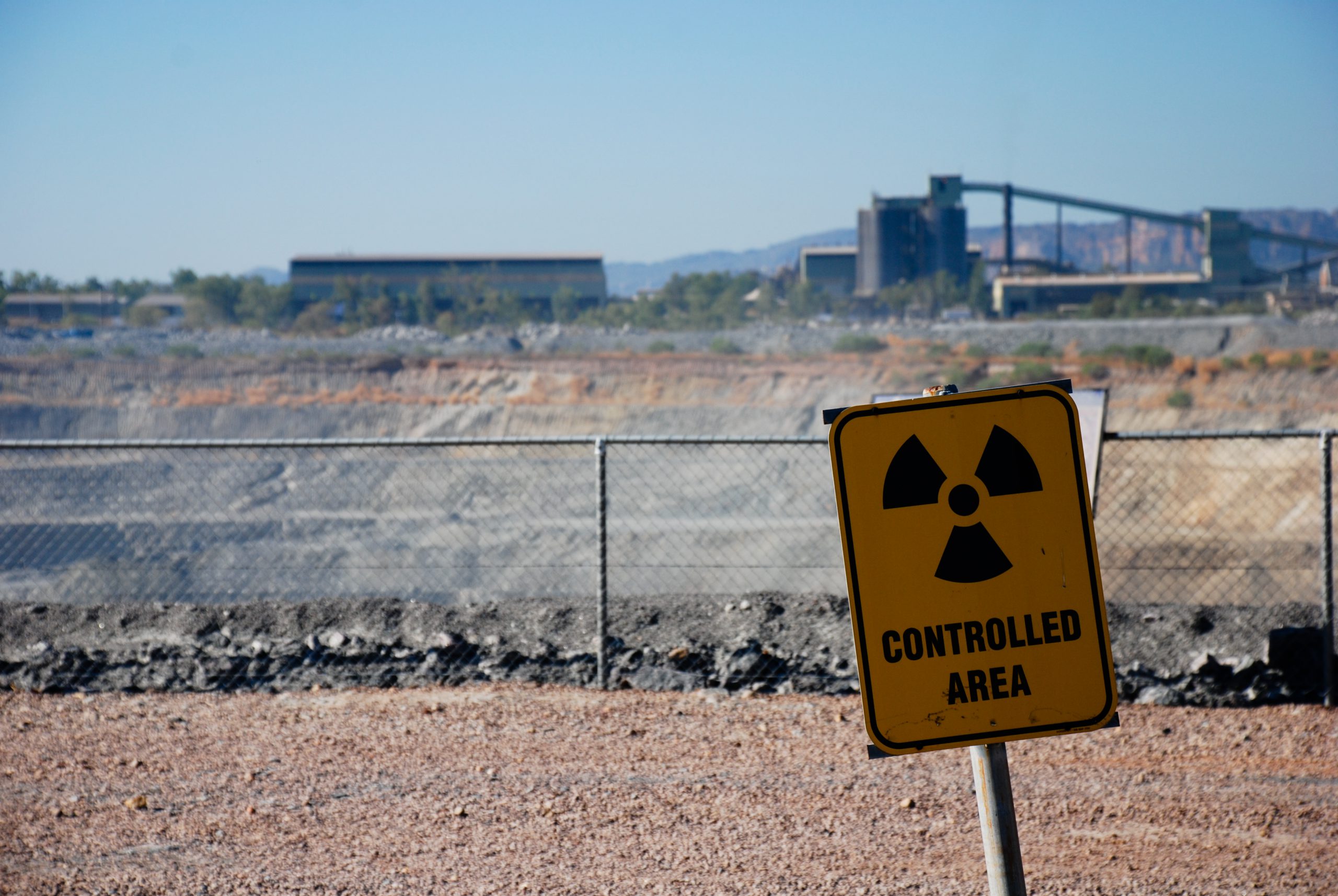
Uranium mining is still causing problems in the US. This was the topic of Radio Active Magazine on KKFI, 90.1 FM Community Radio, on Feb. 9. Activists from the Multicultural Alliance for a Safe Environment (MASE), based in Albuquerque, NM, joined PeaceWorks-KC leaders for the program.
The MASE activists on the program were Anna Benally, a former uranium mine employee turned activist who is working to heal the land and protect the health of people and livestock, and Susan Gordon, coordinator of MASE. PeaceWorks Board members Ann Suellentrop and myself introduced the MASE leaders and interviewed them. The podcast is online at https://kkfi.org/program-episodes/fighting-uranium-contamination-in-the-southwest/.
Atomic weapons plan risky for SC, lawyers say. Noted legal service joins fray
Savannah River Site Watch, Nuclear Watch New Mexico and Tri-Valley CARES recently retained the Environmental Law Project. They say pit factories are expensive, unnecessary, needlessly threaten the environment, and could leave unused plutonium stranded permanently in places like SRS.
BY: SAMMY FRETWELL | thestate.com FEBRUARY 12, 2021
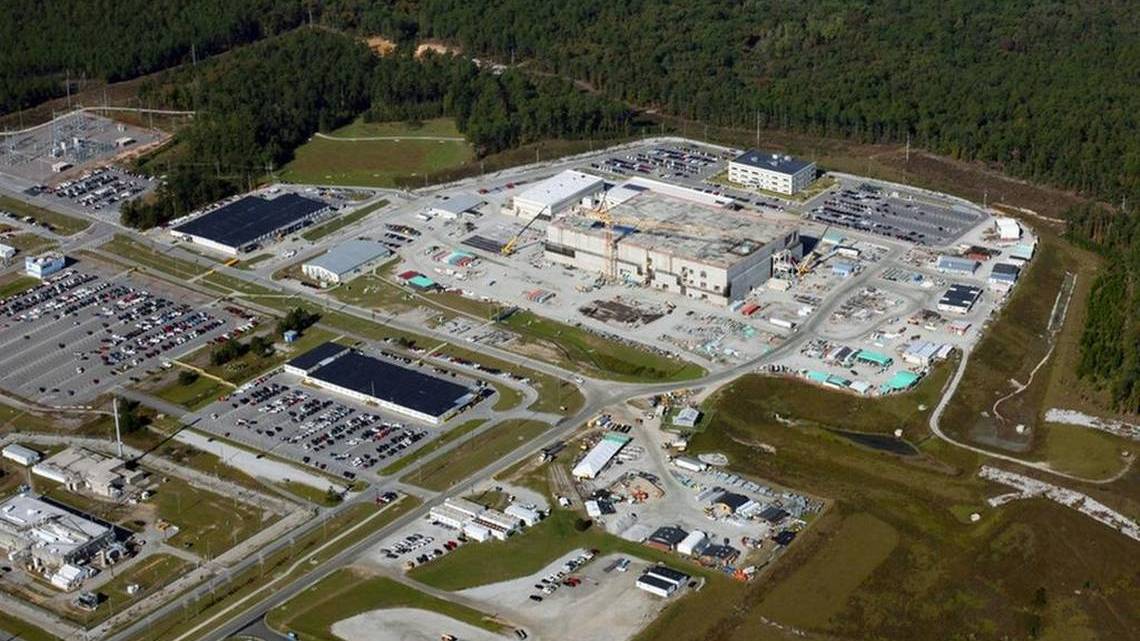
A South Carolina legal service has joined the fight against an atomic weapons components factory at the Savannah River Site, raising the possibility that environmental groups will sue the federal government to stop the effort.
The South Carolina Environmental Law Project, a non-profit service with an extensive record of arguing cases in court, outlined concerns about the factory in a letter this week to the U.S. Department of Energy. The letter called the proposed factory risky and in need of further study.
At issue is a proposal to build a nuclear weapons pit plant that would use plutonium, a deadly long-lived radioactive material, at the Savannah River Site.
The pit factory would produce potentially thousands of jobs, but is drawing opposition from environmental groups in South Carolina, New Mexico and California.
In Santa Fe, protesting LANL’s arrival
Luis Sánchez Saturno / The New Mexican Feb 12, 2021
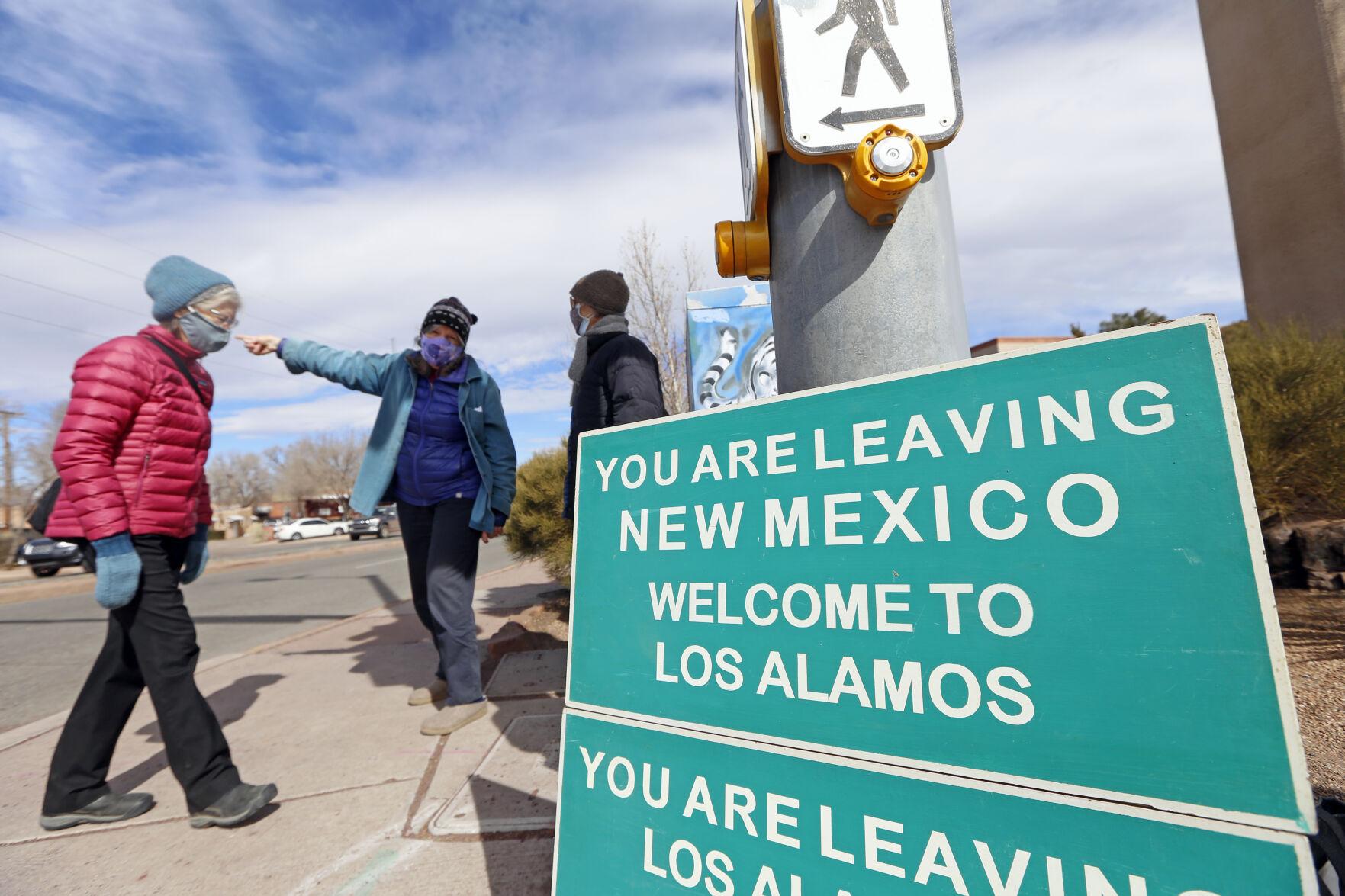
Los Alamos lab, birthplace of the atomic bomb, STILL under threat from wildfires despite repeated major incidents
“The threat and risks of wildfire to the lab and northern New Mexico will continue to increase because of climate warming, drought and expanded nuclear weapons production,” said Jay Coghlan, director of the group Nuclear Watch New Mexico.
A recent audit by the US Energy Department’s inspector general found that threat-reduction measures such as the maintenance of the lab’s network of fire roads, strategic clearing of vegetation in the surrounding area as well as the production of a coherent preparedness and mitigation plan had not been carried out
Photographic evidence included in the report indicated a tree density of 400 to 500 per acre, 10 times the recommended safe level of 40 to 50 trees per acre.
Audit Raises Concerns About Wildfire Risks at US Nuclear Lab
“The threat and risks of wildfire to the lab and northern New Mexico will continue to increase because of climate warming, drought and expanded nuclear weapons production,” said Jay Coghlan, director of the group Nuclear Watch New Mexico.
BY: SUSAN MONTOYA BRYAN | wokv.com February 10, 2021
ALBUQUERQUE, N.M. — (AP) — One of the nation’s premier nuclear laboratories isn’t taking the necessary precautions to guard against wildfires, according to an audit by the U.S. Energy Department’s inspector general.
The report comes as wildfire risks intensify across the drought-stricken U.S. West. Climatologists and environmentalists have been warning about worsening conditions across the region, particularly in New Mexico, which is home to Los Alamos National Laboratory and where summer rains failed to materialize last year and winter precipitation has been spotty at best.
The birthplace of the atomic bomb, Los Alamos has experienced hundreds of millions of dollars in losses and damage from major wildfires over the last two decades. That includes a blaze in 2000 that forced the lab to close for about two weeks, ruined scientific projects, destroyed a portion of the town and threatened tens of thousands of barrels of radioactive waste stored on lab property.
Watchdog groups say the federal government needs to take note of the latest findings and conduct a comprehensive review before the lab ramps up production of key plutonium parts used in the nation’s nuclear arsenal.
Los Alamos Nuclear Weapons Lab Opens Office in the City of the Santa Fe (“Holy Faith”) of Peace and Environmental Protection
FEBRUARY 10, 2021
Santa Fe, NM – A Lab press release has announced that “[c]onnections between Los Alamos National Laboratory and the City of Santa Fe will be strengthened with the Laboratory’s opening of a new downtown office” after signing a 10-year lease on a 28,000-square-foot building. The Lab’s press release ignores LANL’s $2.9 billion nuclear weapons production budget (up 33% in one year), its proposed 46% cut to cleanup to $120 million, serious groundwater contamination and recent reports how it has neglected wildfire protection. Two catastrophic wildfires in the last 21 years on or near the Lab blanketed a large portion of northern New Mexico with possibly contaminated smoke.
The City of Santa Fe’s official name is the “La Villa Real de la Santa Fe de San Francisco de Asís” (“The Royal Town of the Holy Faith of Saint Francis of Assisi”), in honor of the beloved saint who preached peace and environmental protection and from whom the present Pope draws his name. Pope Francis has repeatedly called for the abolition of nuclear weapons and while in Japan paid homage to the victims of the Hiroshima and Nagasaki bombings. Those atomic bombs were designed and produced at the Los Alamos Lab.
LANL not serious about wildland fires
BY: T.S. Last / Journal North Copyright © 2021 Albuquerque Journal Feb, 9, 2021
SANTA FE – A recently released report by the Department of Energy’s Office of Inspector General suggests that managers at Los Alamos National Laboratory did not take wildland fire prevention seriously enough, despite two catastrophic wildland fires in the past 20 years that threatened the lab and the town, costing taxpayers millions of dollars.
“Our review found that activities designed to reduce the impact from wildland fire had not been fully implemented at Los Alamos National Laboratory (LANL) in accordance with site plans,” says the opening sentence of a 14-page memo from the Inspector General’s office dated Feb. 1.
What’s worse, the report says, some plans were never drafted, and some policies put into place after the Cerro Grande Fire in 2000 and the Las Conchas Fire in 2011 were not being followed.
It adds that lab managers haven’t developed a “comprehensive risk-based approach to wildland fire management,” as required by the Federal Wildland Fire Management Policy. The report also describes a “lack of formality.”
“Specifically, the contractor’s Wildland Fire Plan lacked requirements for documenting wildland fire management activities, and responsibilities for implementation were not well defined,” the report says.
The contractor referred to is Triad National Security LLC, which in November 2019 took over management of the lab, which is tasked with developing and manufacturing parts for nuclear weapons. Previously, Los Alamos National Security LLC had held the management contract since 2006.
It appears evident that some of the problems identified in the report predate Triad’s involvement.
The report says that there are about 2,000 structures, including 13 nuclear facilities, with an estimated value of $14.2 billion on approximately 23,000 acres of lab property.
It notes that the 2000 Cerro Grande Fire, which burned 43,000 acres, including about 7,500 acres of LANL property, resulting in $331 million in damage to the lab alone. That does not include an estimated $15 million in lost productivity per week during a 15-day shutdown and recovery period.
The Cerro Grande Fire was a “crown fire” that burned through the tree canopy and spread quickly, and the report has an entire section on mitigation of crown fires.
Despite recognition of the risk, mitigation measures to reduce the risk of crown fires had not been performed.
LANL Falls Behind on Wildfire Protection While Expanding Nuclear Weapons Production Watchdog Calls for New Site-Wide Environmental Impact Statement
FEBRUARY 9, 2021
Santa Fe, NM – The Department of Energy’s Inspector General is reporting that the Los Alamos National Laboratory (LANL) is falling seriously behind in wildfire protection. This is despite the fact that the 2000 Cerro Grande Fire forced the mandatory evacuation of both LANL and the Los Alamos townsite, burned 3,500 acres of Lab property and came within a half-mile of Area G, its largest waste dump. At the time Area G stored above ground some 40,000 barrels of plutonium-contaminated radioactive wastes. It could have been catastrophic had they burst and sent respirable airborne plutonium across northern New Mexico (inhaled plutonium is a very serious carcinogen).
In 2011 the Los Conchas Fire raced 13 miles in 24 hours to the Lab’s western boundary, where it was stopped along State Highway 4. Both it and the Cerro Grande Fire sent huge plumes of harmful smoke across northern New Mexico, possibly carrying Lab contaminants as well (operation of radioactive air emissions monitoring equipment was suspended during the Cerro Grande Fire).
Report: LANL not managing forests to prevent wildfires
Jay Coghlan, executive director of the nonprofit Nuclear Watch New Mexico, said the lab puts most of its attention on producing nuclear weapons and neglects forest maintenance, despite the disastrous Cerro Grande Fire that destroyed dozens of its structures.
“Nuclear weapons above all,” Coghlan said.”
By Scott Wyland swyland@sfnewmexican.com / sfnewmexican.com Feb 9, 2021
Los Alamos National Laboratory has failed to properly manage its forested lands, increasing the threat of wildfires at lab sites and surrounding areas, according to a federal watchdog.
The lab has not thinned trees or cleared forest debris from many wooded areas, nor has it maintained service roads to ensure safe passage for firefighting crews, boosting the potential for “devastating wildfires” like the Cerro Grande Fire in 2000, the U.S. Energy Department’s inspector general said in a strongly worded report released this week.
The report criticized the lab’s main contractor, Triad National Security LLC, for not following fire management plans and not documenting required yearly activities to prepare for and prevent possible wildfires at the site.
“Our review found that activities designed to reduce the impact from wildland fire had not been fully implemented at the Los Alamos National Laboratory in accordance with site plans,” the report said.
The report comes as the federal Drought Monitor shows Los Alamos County and much of the state as being in exceptional drought — the most severe condition — which raises the risks of wildfires.
Jay Coghlan from Nukewatch New Mexico and Kevin Kamps from Beyond Nuclear discuss the recent developments in Nuclear Weapons proliferation and the new international ban on nuclear weapons.
Living on the Edge also cover reasons why nuclear power may not be the low carbon panacea for transitioning our electric grid that is so widely promoted these days.
Plan to send diluted plutonium to Waste Isolation Pilot Plant moves forward
A plan to dispose of surplus plutonium at the Waste Isolation Pilot Plant through a dilution process that would reduce the waste to radiation levels allowable at the facility moved forward at the end of 2020 and the process was expected to continue through 2022.
By: Adrian Hedden | currentargus.com February 8, 2021
The National Nuclear Security Administration (NNSA) – an arm of the U.S. Department of Energy – announced in December its intention to draft an environmental impact statement on the project and a public comment scoping was extended until Feb. 18.
Comments on the project can be made to the NNSA via email to SPDP-EIS@NNSA.DOE.GOV with the subject line SPDP EIS Scoping Comment.
The EIS will study the scope of the project and its potential impacts on the environment and DOE operations at numerous sites involved in the storage, down-blending and final disposal of the plutonium.
Radiation Illnesses and COVID-19 in the Navajo Nation
“In Indigenous lands where nuclear weapons testing took place during the Cold War and the legacy of uranium mining persists, Indigenous people are suffering from a double whammy of long-term illnesses from radiation exposure and the COVID-19 pandemic.”
By: Jayita Sarkar, Caitlin Meyer | thebulletin.org February 3, 2021
The COVID-19 pandemic is wiping out Indigenous elders and with them the cultural identity of Indigenous communities in the United States. But on lands that sprawl across a vast area of the American West, the Navajo (or Diné) are dealing not just with the pandemic, but also with another, related public health crisis. The US Centers for Disease Control and Prevention says COVID-19 is killing Native Americans at nearly three times the rate of whites, and on the Navajo Nation itself, about 30,000 people have tested positive for the coronavirus and roughly 1,000 have died. But among the Diné, the coronavirus is also spreading through a population that decades of unsafe uranium mining and contaminated groundwater has left sick and vulnerable.
The Future of War in Biden’s America
Danny Sjursen offers a Bidenesque tour of U.S. militarism.
By: Danny Sjursen Tom’s Dispatch | consortiumnews.com

Hard as it is to believe in this time of record pandemic deaths, insurrection, and an unprecedented encore impeachment, Joe Biden is now officially at the helm of the U.S. war machine. He is, in other words, the fourth president to oversee America’s unending and unsuccessful post-9/11 military campaigns.
In terms of active U.S. combat, that’s only happened once before, in the Philippines, America’s second-longest (if often forgotten) overseas combat campaign.
Yet that conflict was limited to a single Pacific archipelago. Biden inherits a global war — and burgeoning new Cold War — spanning four continents and a military mired in active operations in dozens of countries, combat in some 14 of them, and bombing in at least seven.
Nukes aren’t just for bombers and subs. Here are some unusual ways militaries have also planned to drop the bomb
Throughout the Cold War, the prospect of bombers dropping nuclear bombs and submarines launching nuclear-tipped missiles terrified people around the world. Those were the major delivery methods, but both militaries developed an array of smaller nuclear weapons for tactical use, and planners in those militaries gave very real consideration to using them.
By: Benjamin Brimelow | businessinsider.com Jan 28, 2021
The Special Atomic Demolition Munition (SADM) was small enough to fit into a large backpack but still had a yield of a kiloton. It was intended to be planted by small, specially trained teams that would set a time fuse before attempting to escape.
You can actually view these asinine “backpack nukes” at the National Museum of Nuclear Science & History in Albuquerque. These “small” weapons, many of them more powerful than the nuclear bomb dropped on Hiroshima, would have obliterated any battlefield and irradiated much of the surrounding area.
The Little Boy (15 kilotons) and Fat Man (21 kilotons) atomic bombs dropped on Hiroshima and Nagasaki, respectively, remain the only nuclear weapons used in combat.
Those bombs destroyed the cities, killed or wounded hundreds of thousands of people, and left thousands more with long-term health problems. The carnage and destruction are the first things that come to mind when discussing nuclear weapons.
But nukes weren’t just for destroying cities. Early in the Cold War, the tactical use of nuclear weapons on the battlefield was not only researched extensively but actually considered.
Unknown Impact: County asks Los Alamos National Labs to assess environmental impact before expanding nuclear production
Santa Fe County wants Los Alamos National Laboratories to take stock of its impact on the environment and surrounding communities before pushing ahead with plans to expand.
By Leah Cantor | sfreporter.com Jan 27, 2021
On Tuesday, the Board of County Commissioners unanimously passed a resolution asking the National Nuclear Safety Administration to complete a new site-wide environmental impact statement for LANL in compliance with the National Environmental Policy Act before expanding plutonium pit production.
“The public health and safety is so important,” said Commissioner Anna Hansen, noting that the NEPA process is one of the only avenues for the public to weigh in on what goes on at the labs. “We have a longstanding tradition of promoting democracy and environmental protection in impending nuclear weapons by requesting that local governments be kept fully informed about projects to facilitate large scale production of additional plutonium warheads,” she said.
Yet right now, the labs’ full impact on Northern New Mexico is unknown. It’s been more than a decade since the last time the NNSA produced an EIS for the laboratory, and a lot has changed since then, including regional understanding of wildfire risks and potential water contamination from the labs.
Remembering the Night Two Atomic Bombs Fell—on North Carolina
Sixty years ago, at the height of the Cold War, a B-52 bomber disintegrated over a small Southern town. An eyewitness recalls what happened next.
By: Bill Newcott | nationalgeographic.com PUBLISHED JANUARY 22, 2021
BILLY REEVES REMEMBERS that night in January 1961 as unseasonably warm, even for North Carolina. But it got a lot hotter just before midnight, when the walls of his room began glowing red with a strange light streaming through his window.
“I was just getting ready for bed,” Reeves says, “and all of a sudden I’m thinking, ‘What in the world…?'”
The 17-year-old ran out to the porch of his family’s farm house just in time to see a flaming B-52 bomber—one wing missing, fiery debris rocketing off in all directions—plunge from the sky and plow into a field barely a quarter-mile away.
“Everything around here was on fire,” says Reeves, now 78, standing with me in the middle of that same field, our backs to the modest house where he grew up. “The grass was burning. Big Daddy’s Road over there was melting. My mother was praying. She thought it was the End of Times.”
Like any self-respecting teenager, Reeves began running straight toward the wreckage—until it exploded.
The Doomsday Datavisualizations



In setting the Doomsday Clock, the Bulletin’s Science and Security Board consults widely with colleagues across a range of disciplines and considers qualitative and quantitative information from a wide array of sources. These three visualizations display some of the kinds of public data that are available in the Bulletin’s three coverage areas: nuclear weapons, climate change, and disruptive technology.
The Doomsday Clock is a design that warns the public about existential threats, a metaphor that reminds the world of the perils that must be addressed if humanity is to continue survive. These three data visualizations can be seen as an artistic extension of the original design.
DESIGNED BY PENTAGRAM
Giorgia Lupi, Sarah Kay Miller, Phil Cox,
Ting Fang Cheng, Talia Cotton
In November 2011, the U.S. Senate designated January 27th as a National Day of Remembrance for the Nevada Test Site Downwinders. The Senate recognized the harm caused to Americans from radioactive fallout from the aboveground atomic tests in Nevada, which began on January 27, 1951 and ended on July 17, 1962. Nuclear testing by the U.S. government started in New Mexico with Trinity in July 1945, and the Crossroads Series of three tests followed in the Pacific in 1946. The United States took part in nuclear testing as part of the escalating Cold War arms race, and nuclear weapons proliferated. With each nuclear test, radioactive fallout spread globally.
FOR MORE INFORMATION VIEW LINKS BELOW
Downwinders And The Radioactive West Premieres January 27 at 7PM on PBS Utah
Why a National Day of Remembrance for Downwinders is Not Enough
Congress Introduces Legislation to Expand Compensation for Radiation Exposure
Why a National Day of Remembrance for Downwinders is Not Enough
“A day of recognition is important – these communities deserve to be recognized for the unimaginable sacrifice they unknowingly made to their country. But it is not enough. The best and most important way to honor these victims of the US nuclear weapons program is by compensating them and providing health care for the illnesses and deaths they have suffered.”
BY: LILLY ADAMS GUEST COMMENTARY, UCS | JANUARY 26, 2021, 10:56 AM EST
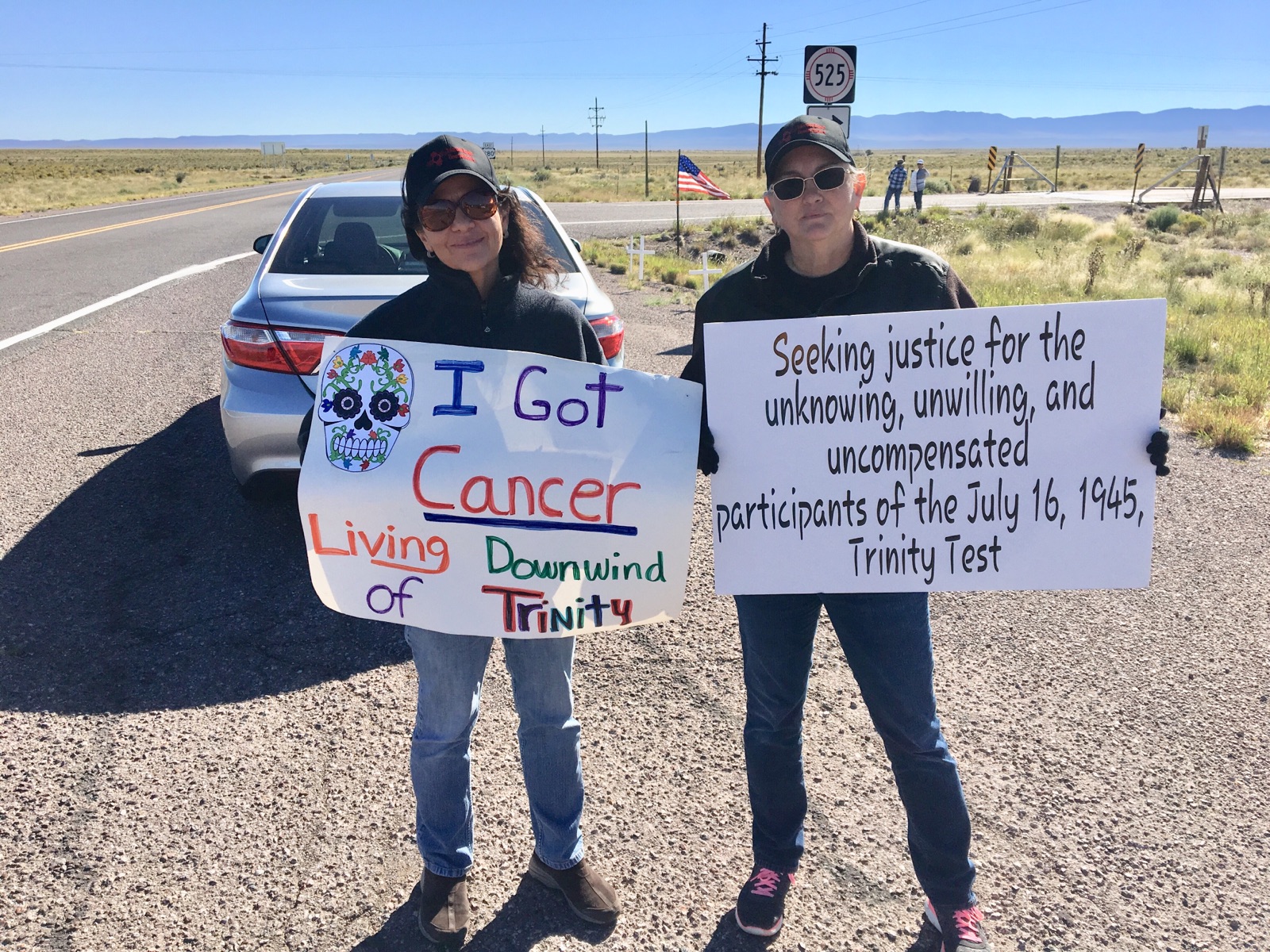
There’s no question that the US government killed and sickened many of its own people through explosive nuclear testing: estimates of the death toll in the United States from nuclear testing vary widely, from tens of thousands to hundreds of thousands. But the harm doesn’t stop there. Other nuclear weapons activities, like uranium mining, production, and waste storage and cleanup, have also caused unknown deaths and illnesses. As is so often the case, the people who have borne the heaviest burden of these activities are often people of color, Indigenous communities, women and children, and those living in poor, rural communities. These people are the largely ignored, often forgotten casualties of the Cold War and the US nuclear weapons program.
The Most Dangerous Situation Humanity Has Ever Faced
“The Bulletin of the Atomic Scientists announced Wednesday that the hands of the iconic Doomsday Clock remain at 100 seconds to midnight — as close to the end of humanity as the clock has ever been. The temptation, of course, in a dark hour is to cling to even the faintest signs of light and hope. And the truth is that there are some encouraging signs now emerging. However, we continue to teeter at the brink and moving the Clock away from midnight would provide false hope at a time when urgent action is what is needed.”.
Opinion by Edmund G. Brown Jr. and Robert Rosner / Updated 11:17 AM ET, Wed January 27, 2021
For a year now, the world has been ravaged by the horrors of Covid-19. It has caused millions to lose their jobs, overwhelmed health care systems and dramatically changed how we live. The disease has killed more than 2 million people and infected 100 million around the globe.
Even so, we face fundamentally greater threats to humanity than this pandemic. We refer to the catastrophic dangers which nuclear weapons and climate change pose — dangers that preceded this pandemic and will persist long after it ends. Unfortunately, and unlike the priority given to developing a vaccine against the virus, little progress was made to reduce the danger of the world’s nuclear weapons arsenal or to effectively slow the carbon emissions warming our planet in 2020. The sudden appearance and confused response to the virus makes all too clear how ill-prepared the world can be when it has to deal with an unprecedented threat of global magnitude.
UN Building Lit Up to Celebrate The Nuclear Ban Treaty Entry Into Force January 22





Here are five examples of the type of activities that will be Illegal under international law on 22 January 2021
One of the main problems with talking about nuclear weapons is that it often becomes abstract and hypothetical. Most people barely know which countries have nuclear weapons and do not know to what extent other actors are involved in maintaining and upholding nuclear weapons.
When the Treaty on the Prohibition of Nuclear Weapons (TPNW) enters into force on 22 January 2021, that will need to change.
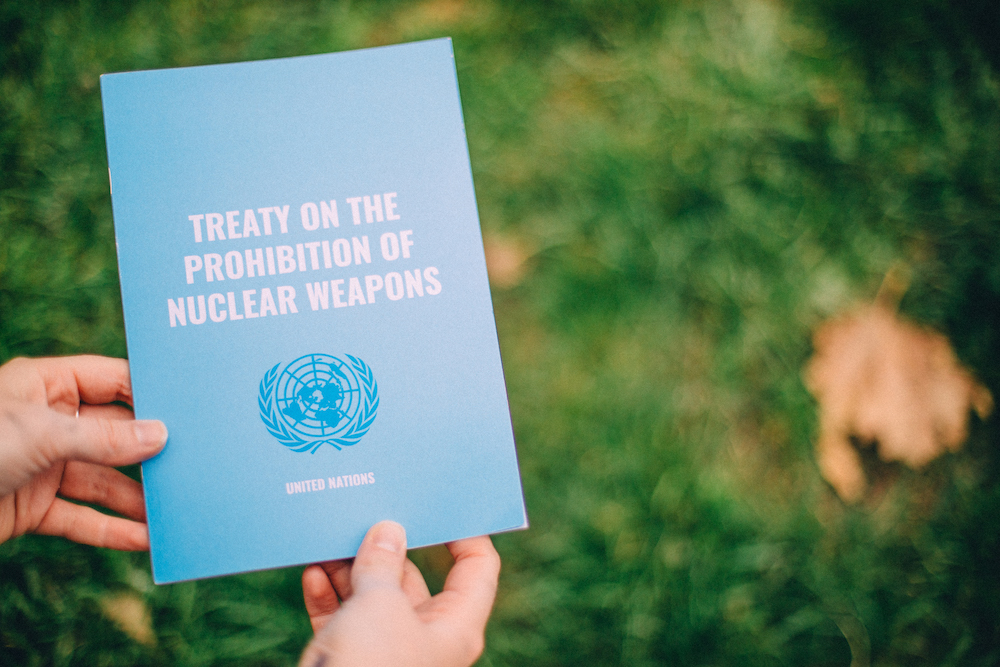
Here are five examples of the kind of activities that will be prohibited under the TPNW and who is currently doing this today. While the treaty will only be legally binding in the countries that have ratified the treaty, it will still create a powerful norm and should lead to increased protests and outrage in countries that haven’t joined the treaty that are behaving in contradiction of this new instrument of international law.
What the treaty prohibits
Article 1 of the treaty prohibits states parties from developing, testing, producing, manufacturing, transferring, possessing, stockpiling, using or threatening to use nuclear weapons, or allowing nuclear weapons to be stationed on their territory. It also prohibits them from assisting, encouraging or inducing anyone to engage in any of these activities.
Treaty Seeks End to Nuclear Madness
It is the beginning of a new movement that will see the elimination of the existential nuclear threat.
Ralph Hutchison, John LaForge | progressive.org
On January 22, the Treaty on the Prohibition of Nuclear Weapons will enter into force. The treaty bans the development, production, possession, deployment, testing, use and just about anything else you can imagine related to nuclear weapons.
Fifty years later, nine nuclear-armed militaries possess more than 13,000 nuclear weapons, arsenals that mock their claimed commitment to disarm “at an early date.”
Approved at the United Nations by 122 countries in 2017, and subsequently signed by 86 and ratified by 51 nations, the nuclear weapons ban will join the venerated status of international prohibitions already established against lesser weapons of mass destruction. These earlier agreements include the Geneva Gas Protocol, the Chemical Weapons Convention, the Biological Weapons Convention, the Ottawa Treaty or Mine Ban Convention and the Convention on Cluster Munitions.
Atop the Powerful Budget Committee at Last, Bernie Sanders Wants to Go Big
To the chagrin of Republicans, the democratic socialist senator will play a central role in shepherding Joseph R. Biden Jr.’s agenda through Congress.
“Sanders, the next chairman of the Senate Budget Committee, plans to take a hard look at fraud at the defense budget in his new perch, he tells POLITICO
“You understand you’re talking to the guy who led the effort to lower defense spending by 10 percent,” the Vermont Independent and self-described Democratic Socialist boasted.
You’re talking about the military budget, which is now higher than the next 10 nations combined,” he continued. “You’re talking about the Pentagon budget, which is the only major government agency which has not been able to undertake an independent audit. And I don’t think anyone has any doubt that there’s massive waste and cost overruns in the military budget.”
“I think if you check the record,” he added, “you’ll find that every major defense contractor has been found guilty of collusion and fraud.”
By Alan Rappeport and Jim Tankersley | nytimes.com
Shortly before the 2016 election, Paul D. Ryan of Wisconsin, the Republican nominee for vice president and the speaker of the House, told a group of college Republicans why he thought Democrats winning control of the Senate would be a policy nightmare.
“Do you know who becomes chair of the Senate Budget Committee?” Mr. Ryan asked. “A guy named Bernie Sanders. You ever heard of him?”
Republicans have long feared the prospect of Mr. Sanders, a self-described democratic socialist from Vermont, taking the helm of the powerful committee given his embrace of bigger government and more federal spending with borrowed money. With Democrats reclaiming the Senate, that fear is about to become a reality. Mr. Sanders, the most progressive member of the chamber, will have a central role in shaping and steering the Democrats’ tax and spending plans through a Congress that they control with the slimmest of margins.
Concern grows over massive US cyberattack – New Mexico’s national labs, Los Alamos and Sandia, cited as possible targets among many
Jay Coghlan, executive director of Nuclear Watch New Mexico, said the breach escalates the threat of a nuclear catastrophe.
“On top of the dangers that we faced during the Cold War this now raises new concerns…Could our nuclear weapons be hacked for malicious reasons? Could hackers take advantage of LANL’s checkered safety and security record and cause a life threatening event in our own backyard? The sooner we all have a nuclear weapons-free world the safer we will be.”
Copyright © 2020 Albuquerque Journal / BY: T.S. LAST / JOURNAL NORTH
 SANTA FE — While the Department of Energy says that a cyberoffensive was limited to business networks, concerns remain about the depth of the breach and what threat it could still pose to national security and New Mexico’s two national laboratories.
SANTA FE — While the Department of Energy says that a cyberoffensive was limited to business networks, concerns remain about the depth of the breach and what threat it could still pose to national security and New Mexico’s two national laboratories.
Some news reports say that the hacks are believed to have been instigated by a Russian intelligence agency. The reports specifically mention Los Alamos and Sandia national laboratories, where atomic research is conducted, as being vulnerable.
In addition, Los Alamos National Laboratory is tasked with producing plutonium pits, the triggering device in nuclear warheads.
Earlier this week the Cybersecurity and Infrastructure Security Agency (CISA) issued a warning, calling the hack “a grave risk” to federal, state, local and tribal governments, as well as critical infrastructure entities and private sector businesses. It said the suspected breach dates back to at least March.
In a joint statement this week, CISA, the FBI and the director of national intelligence said they were working together to investigate a “significant ongoing cybersecurity campaign.”\
‘Highly skeptical’: House Armed Services chairman concerned about SRS pit production
Biden administration expected to take ‘critical look’ at next-generation warhead, estimated to be twice as explosive as Trident
By: Colin Demarest cdemarest@aikenstandard.com / postandcourier.com
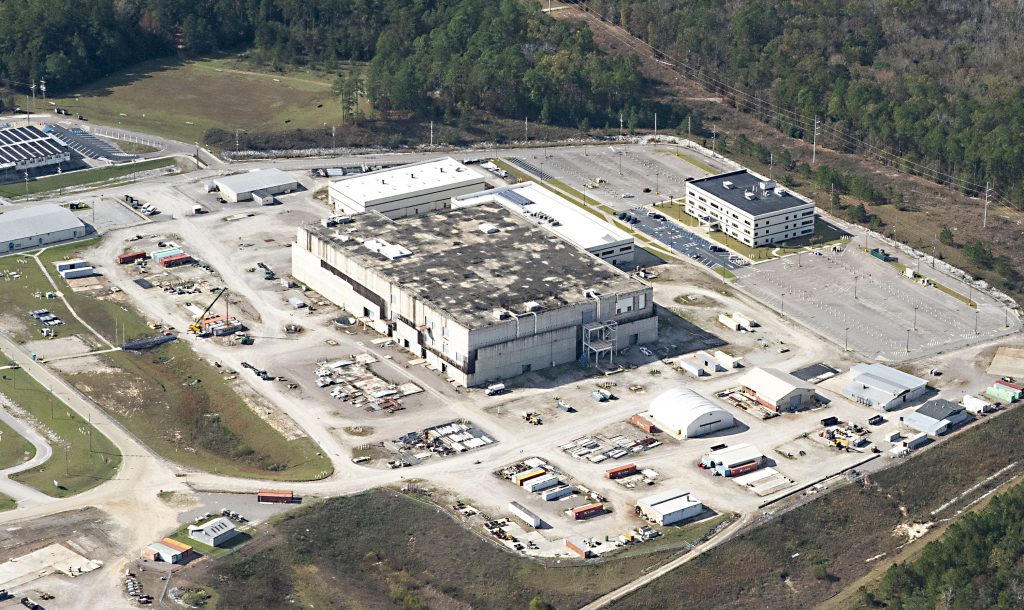
Photo courtesy of High Flyer
Likening the conversion of the failed Mixed Oxide Fuel Fabrication Facility to flipping a bowling alley into a restaurant, U.S. Rep. Adam Smith said he was “highly skeptical that they’re going to be able to turn that building into an effective pit production facility. Highly skeptical.”
US Nuclear Warhead Standoff ‘Has Significant Implications for UK’
Biden administration expected to take ‘critical look’ at next-generation warhead, estimated to be twice as explosive as Trident
By: Dan Sabbagh / theguardian.com
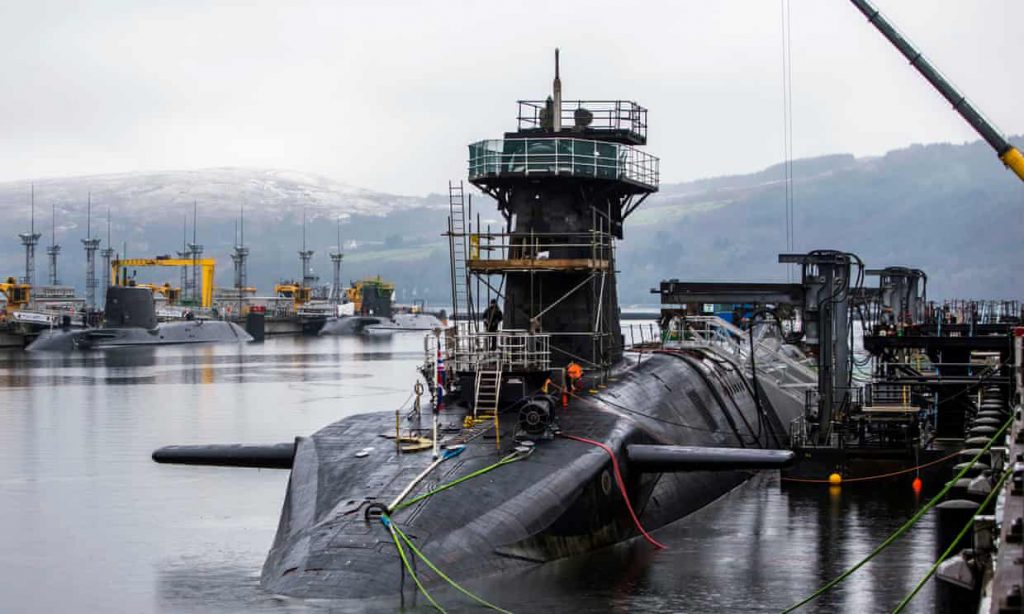
Britain’s most senior defence official admitted there would be “very significant implications” for the future of the Trident nuclear deterrent if Democrats in the US Congress refused to fund a next-generation warhead.
Sir Stephen Lovegrove, permanent secretary at the Ministry of Defence, said that the UK was monitoring the US standoff closely but could not say what impact a refusal to start work on the new W93 warhead would have – or how many billions it would cost.
THE SOFTENING RHETORIC BY NUCLEAR-ARMED STATES AND NATO ALLIES ON THE TREATY ON THE PROHIBITION OF NUCLEAR WEAPONS
BY: TOM SAUER & CLAIRE NARDON / warontherocks.com
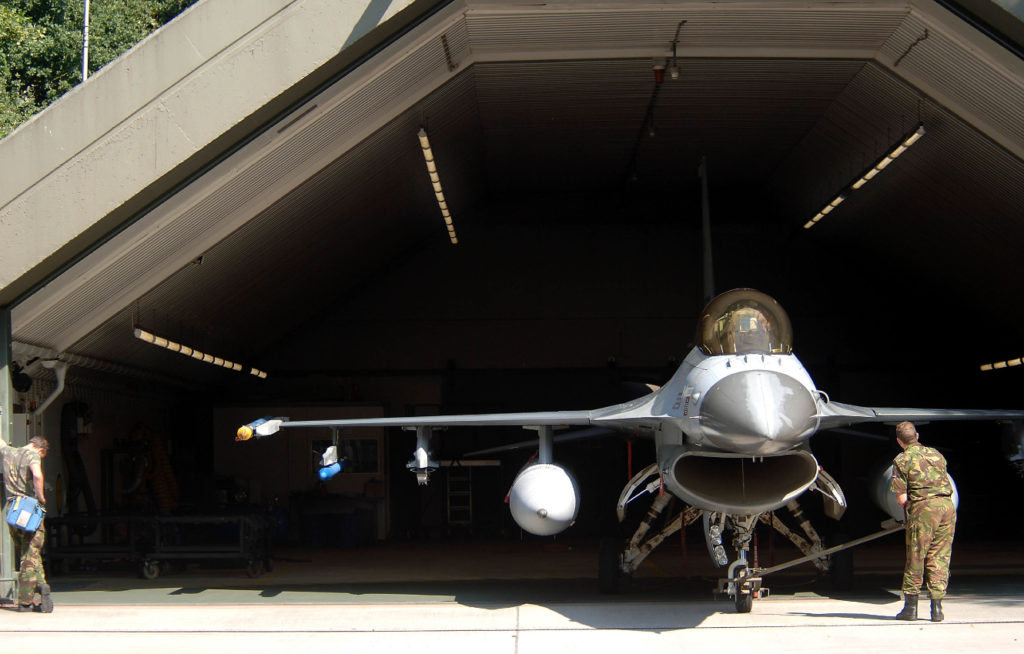
Probably the most iconic moment during the negotiations on the Treaty on the Prohibition of Nuclear Weapons (or “nuclear ban treaty”) was the gathering of a dozen allied ambassadors standing around U.S. Ambassador Nikki Haley in the corridors of the U.N. building in New York, protesting against the ongoing negotiations. While nuclear-armed states and NATO allies remain opposed to the treaty, the tone is softening, and at least two NATO allies are breaking the consensus.

